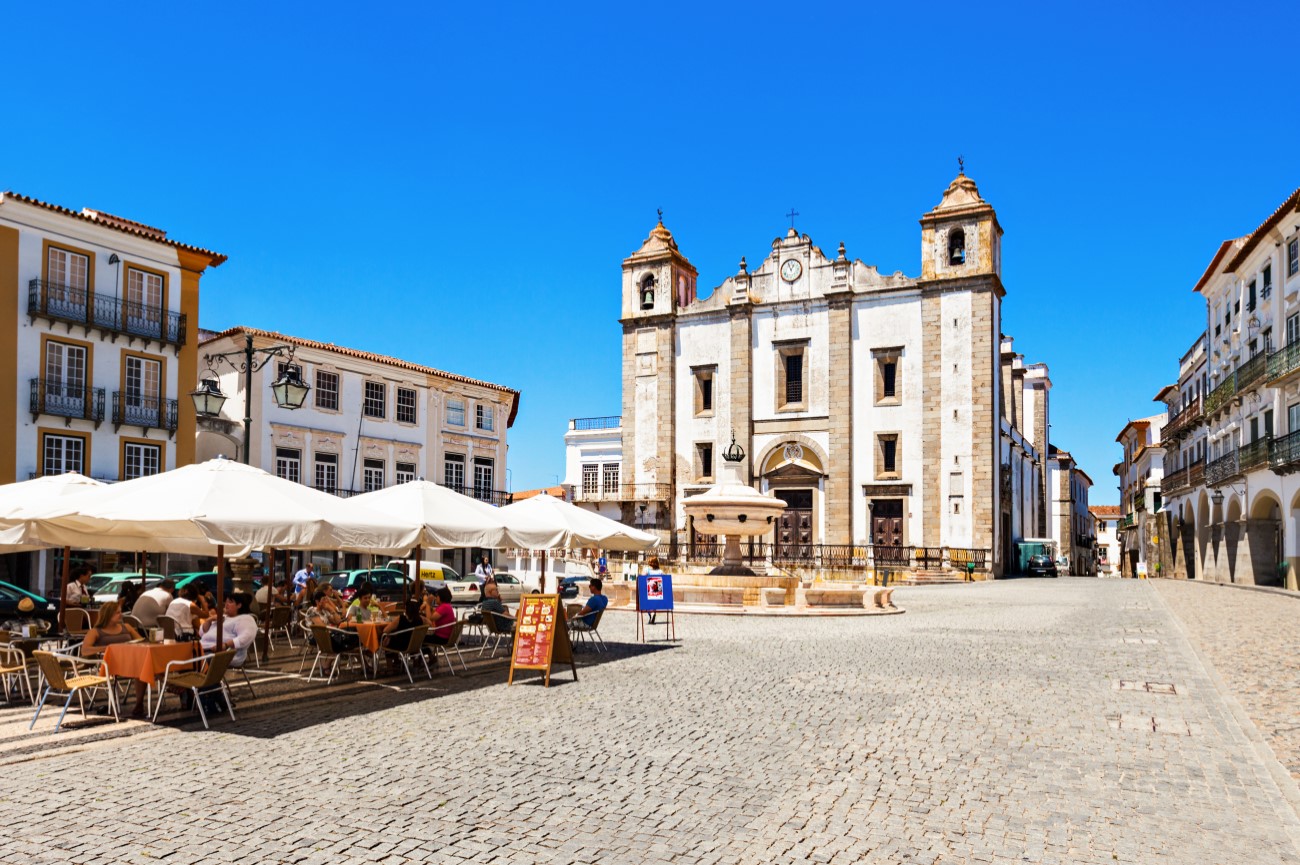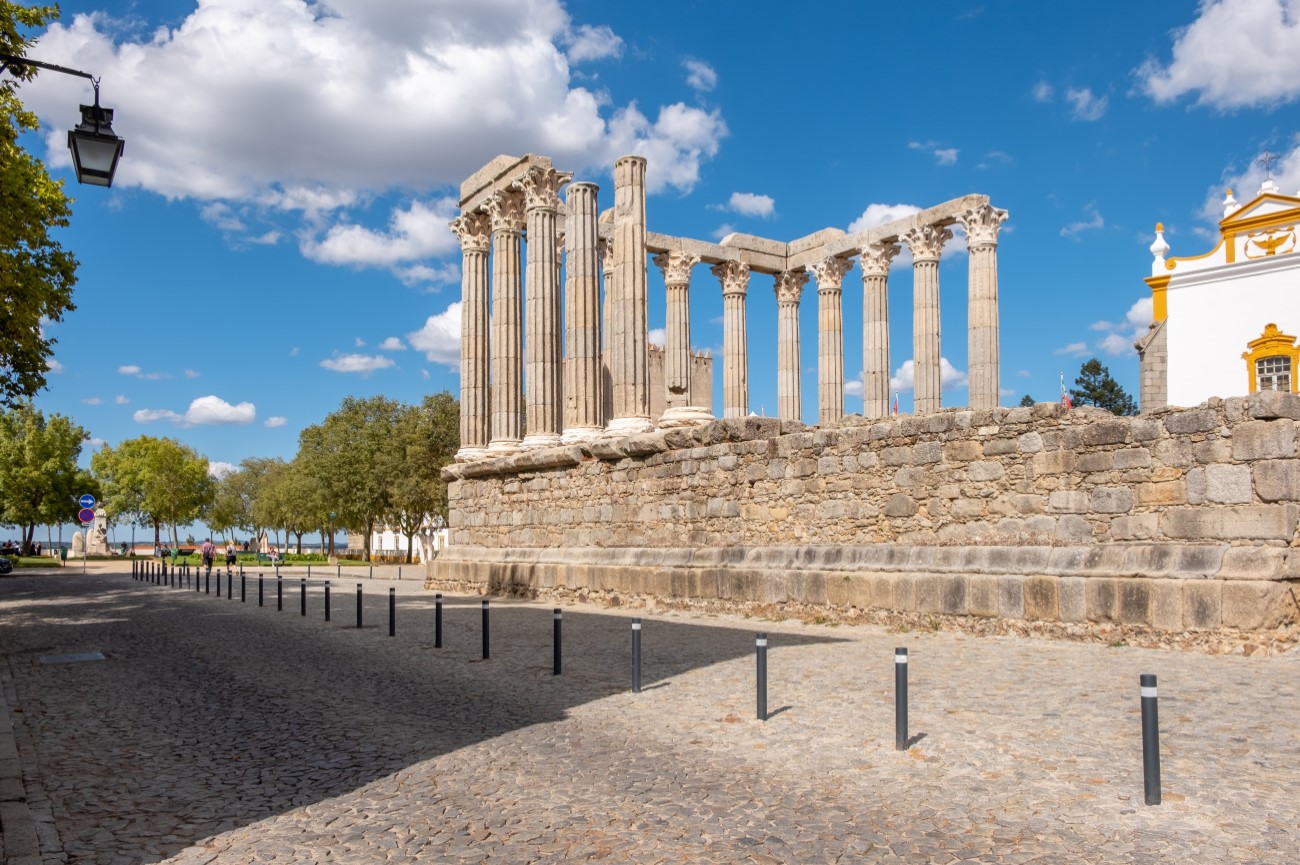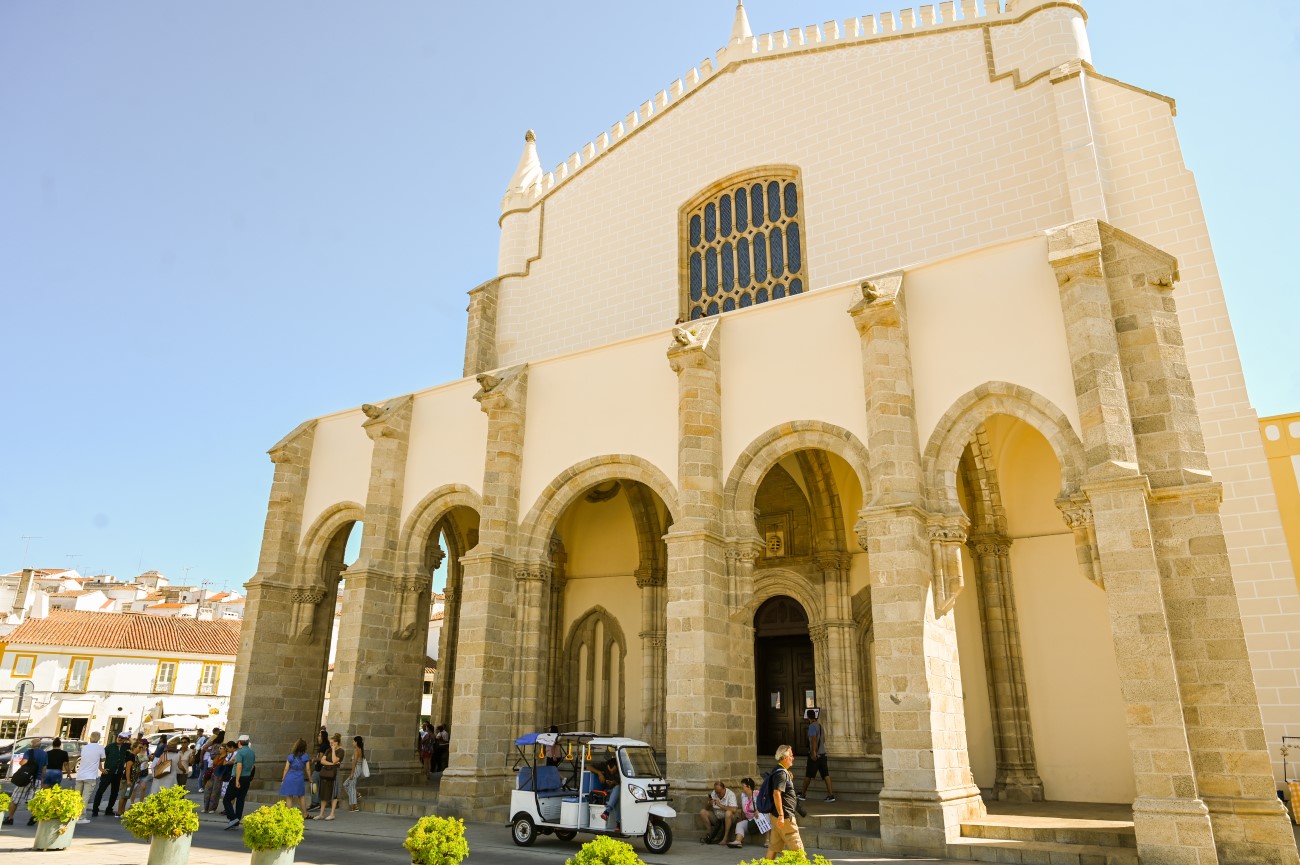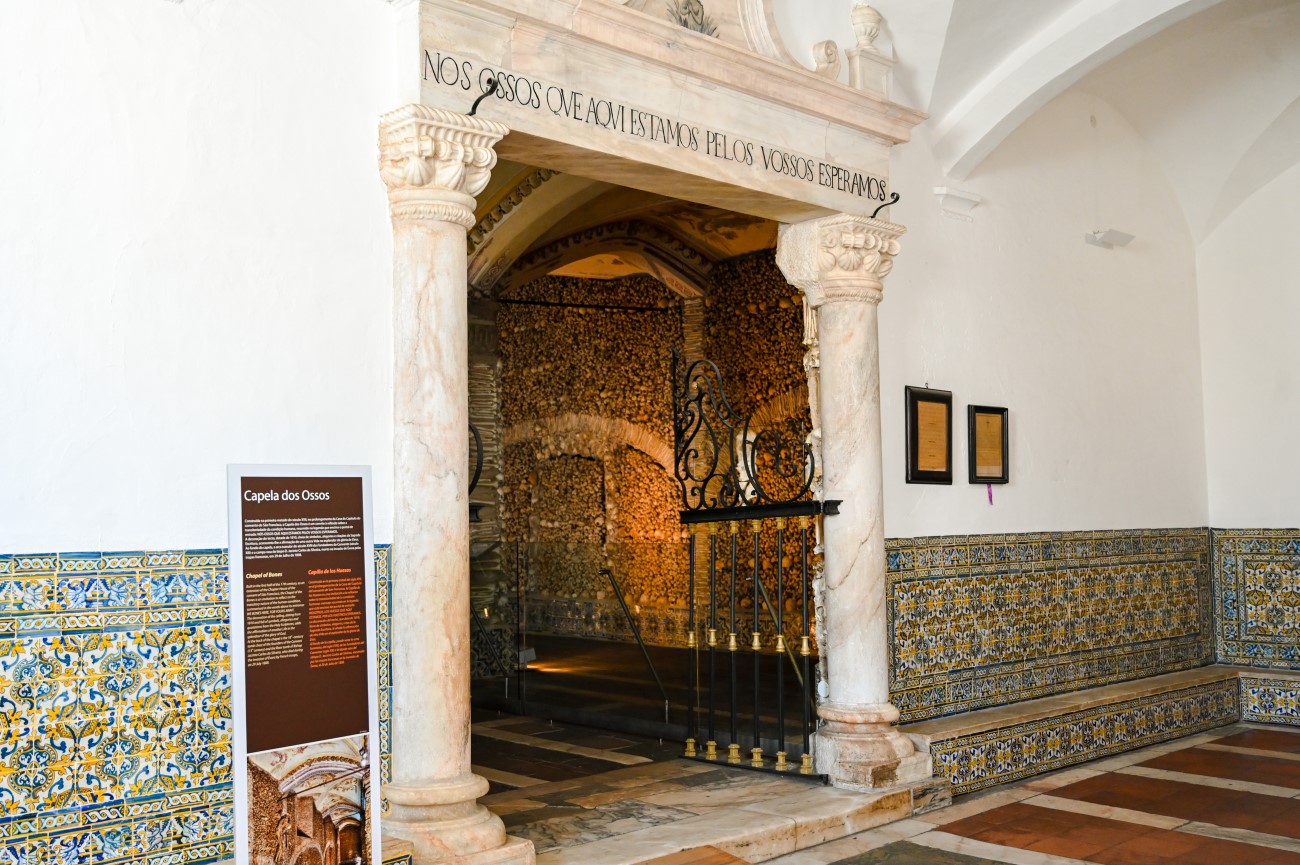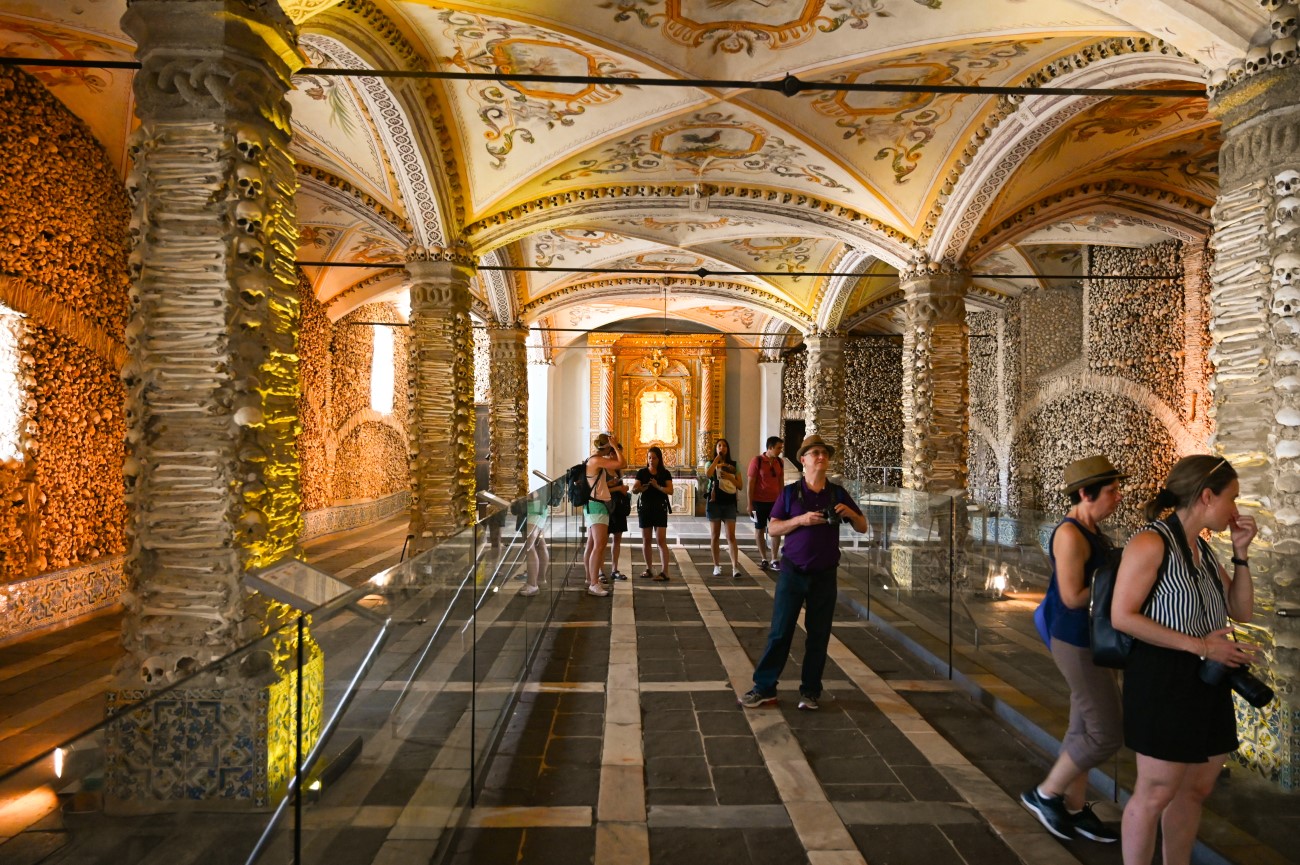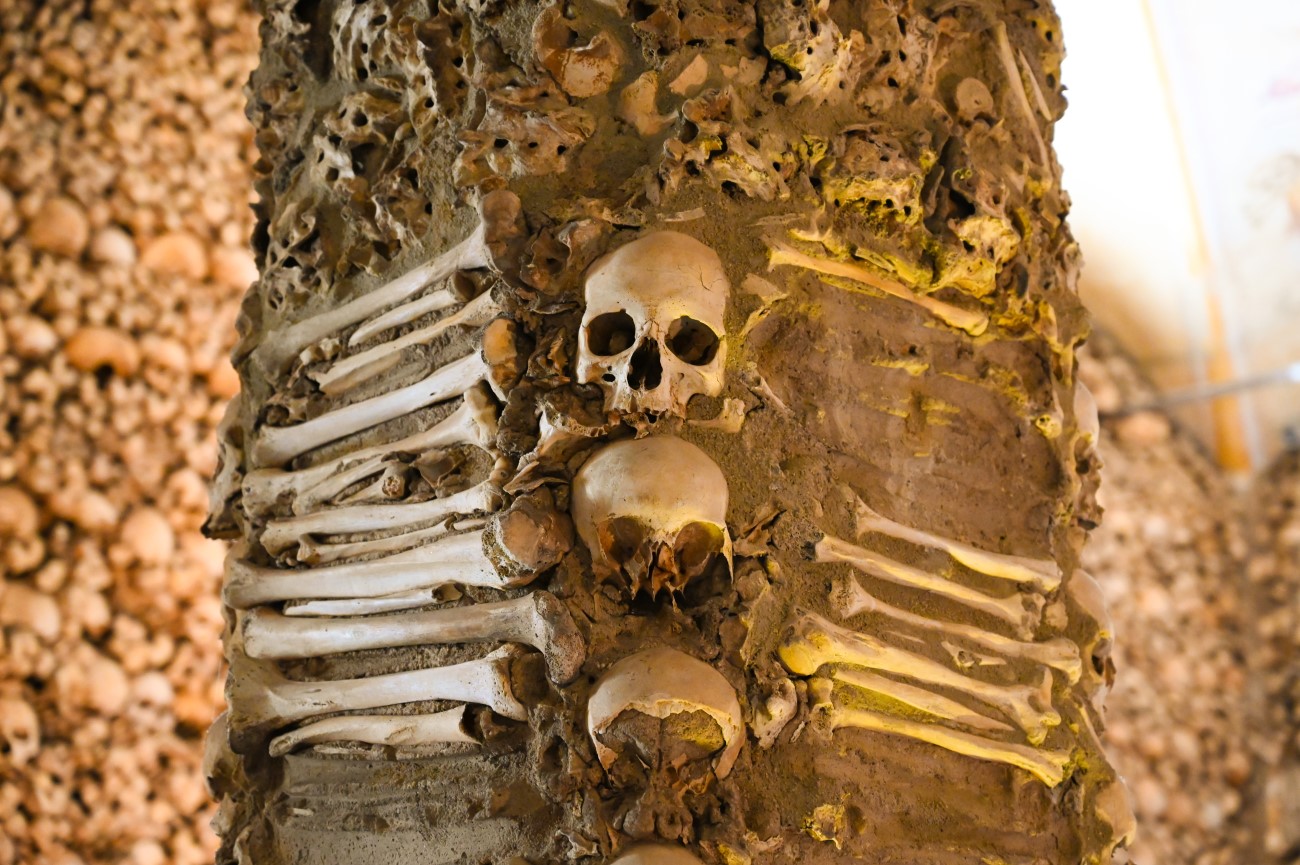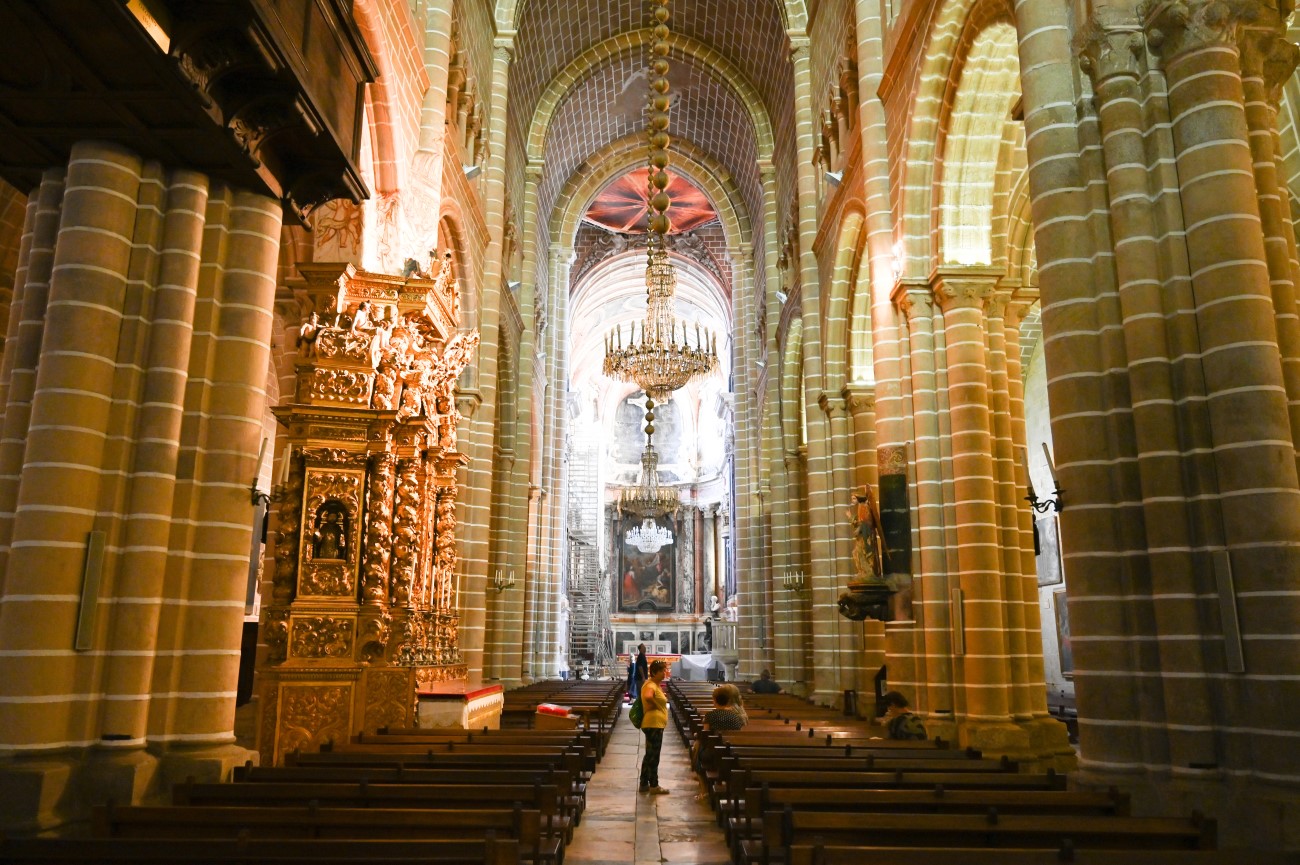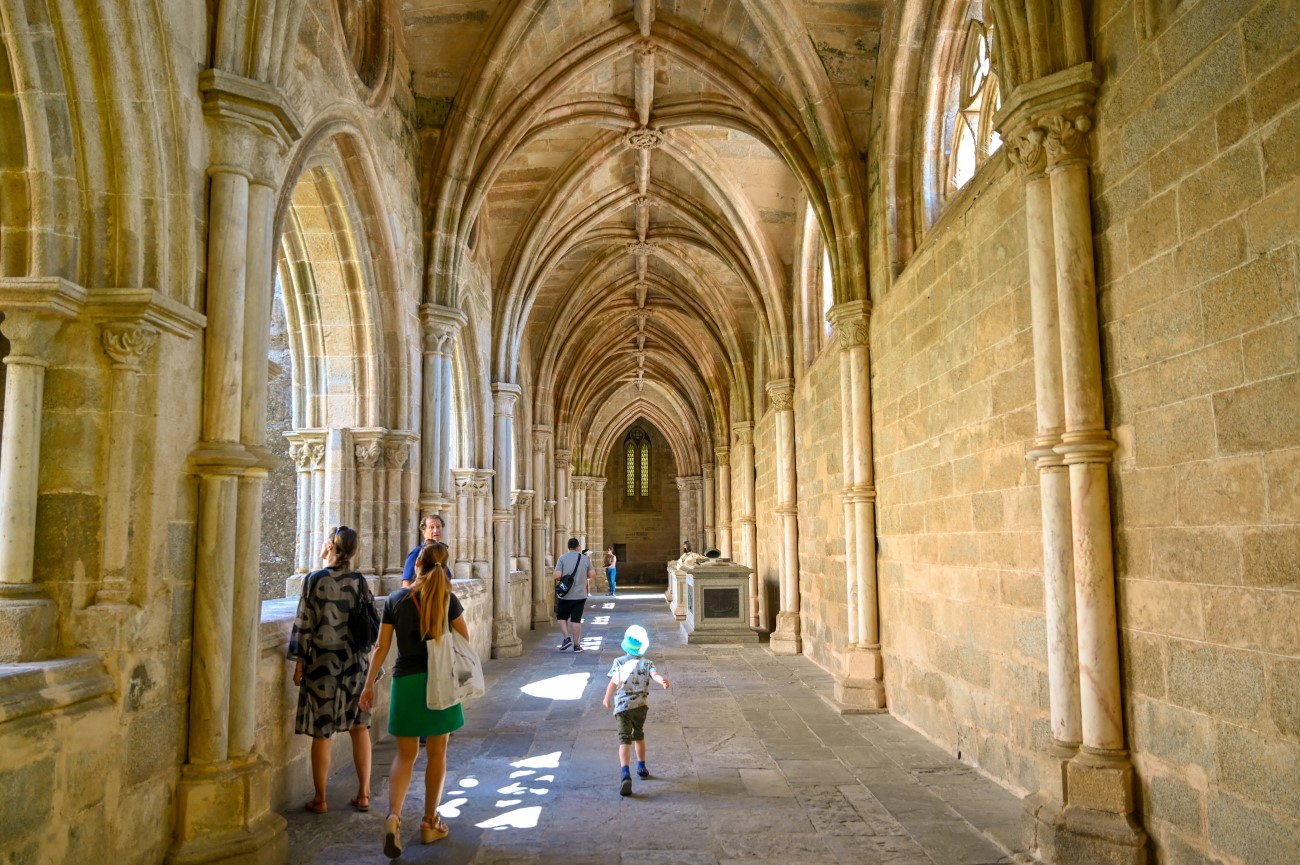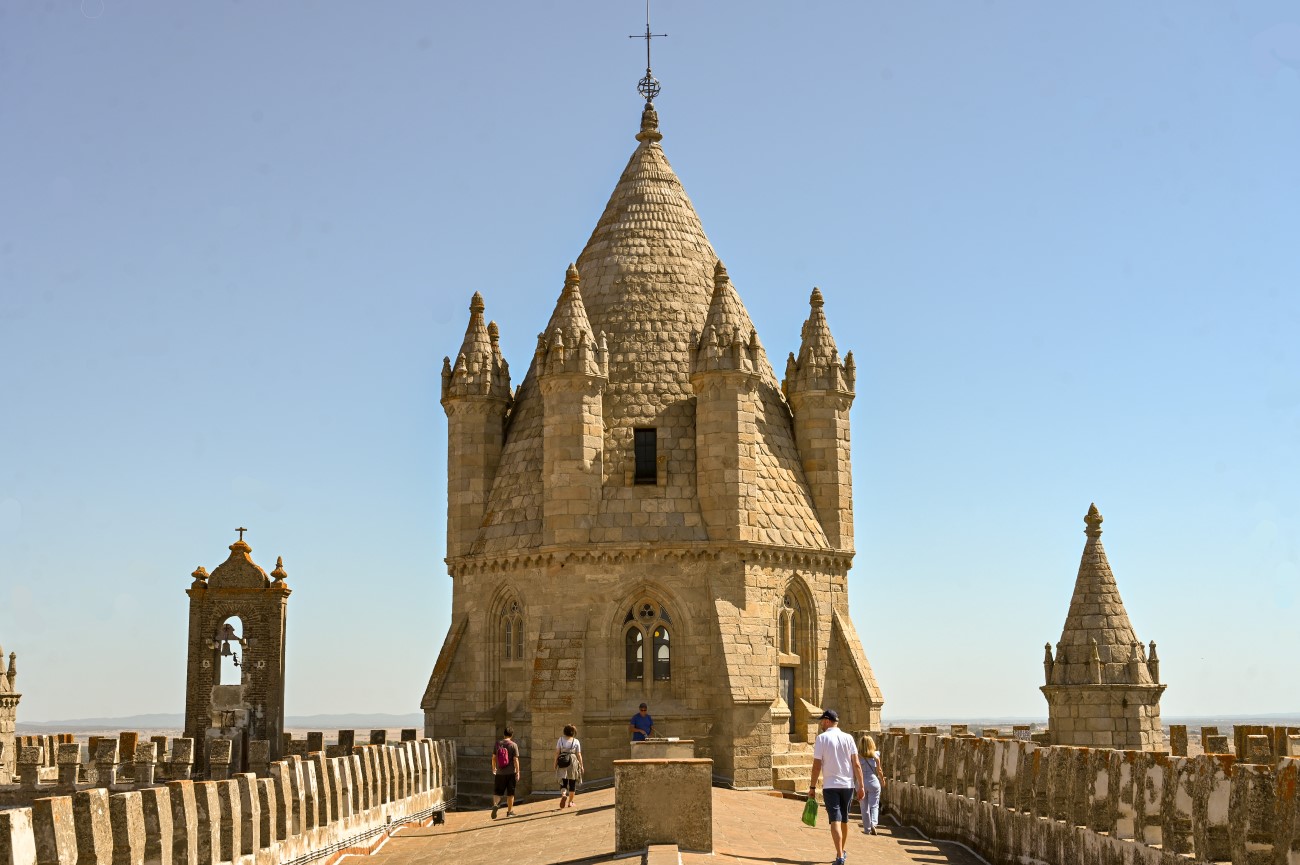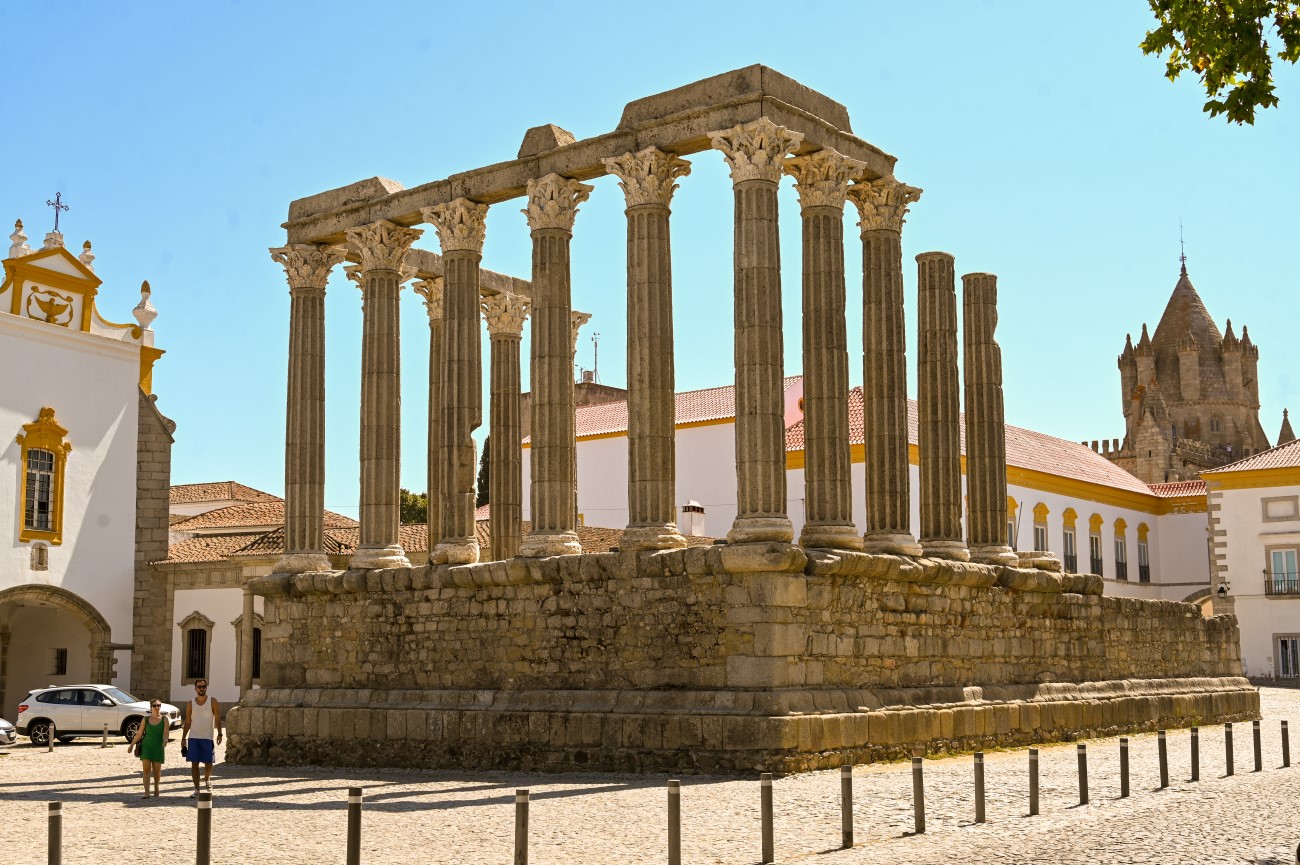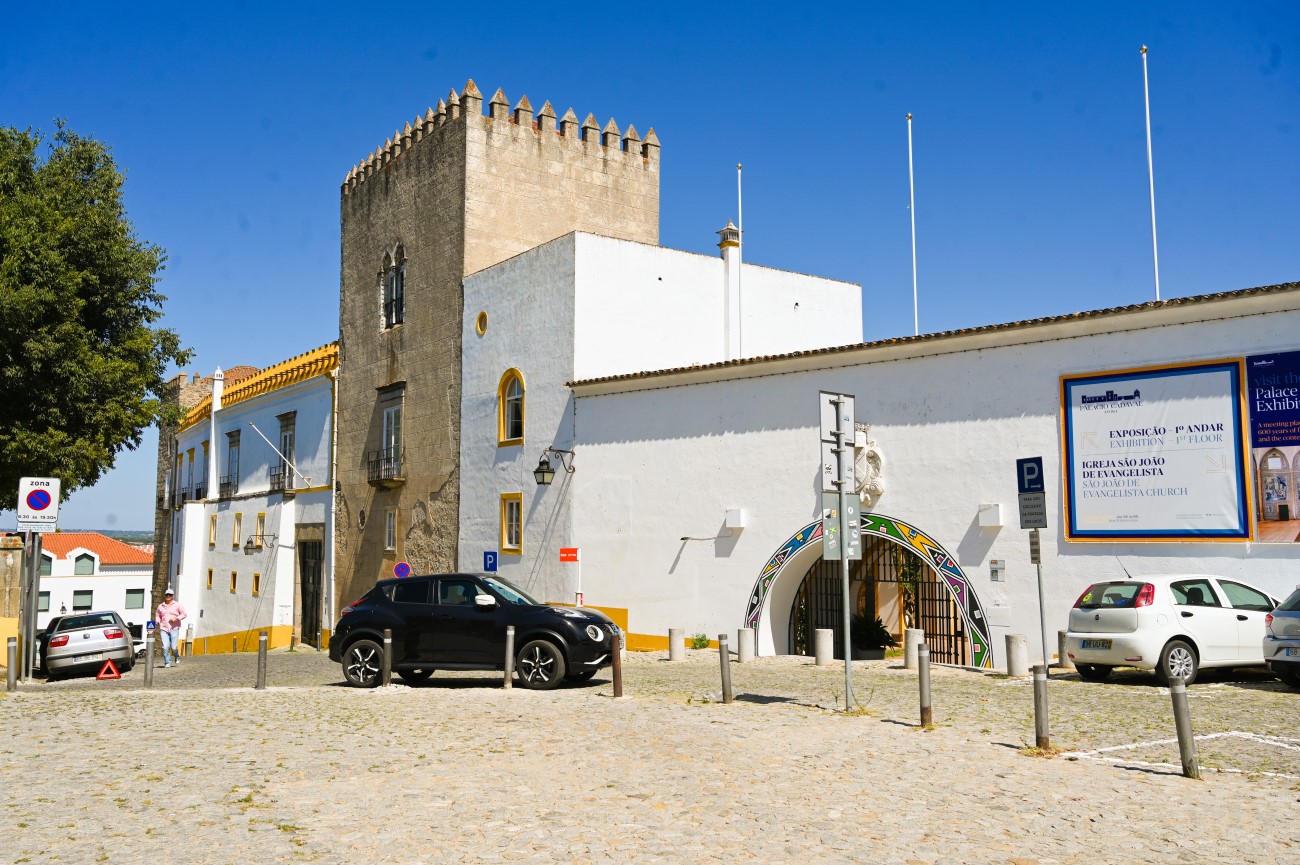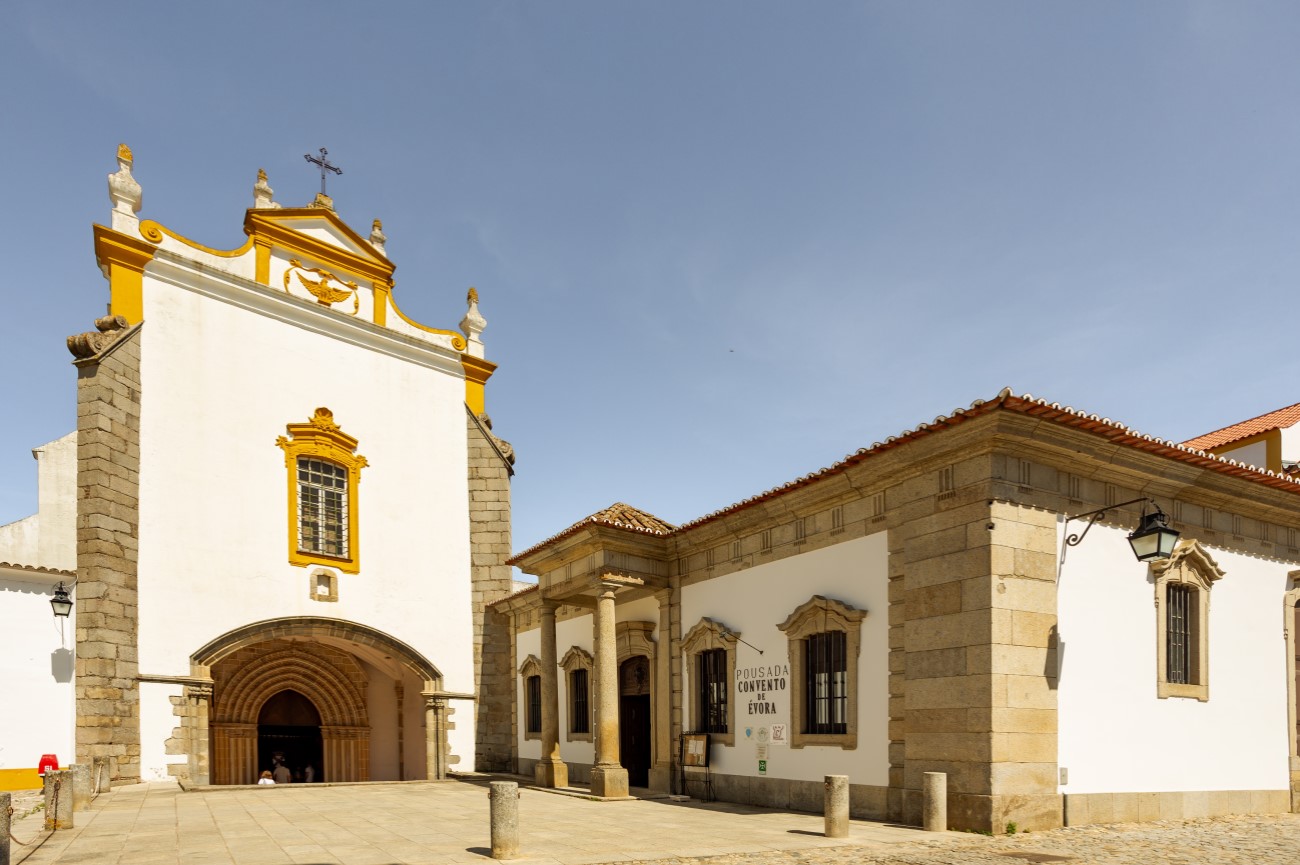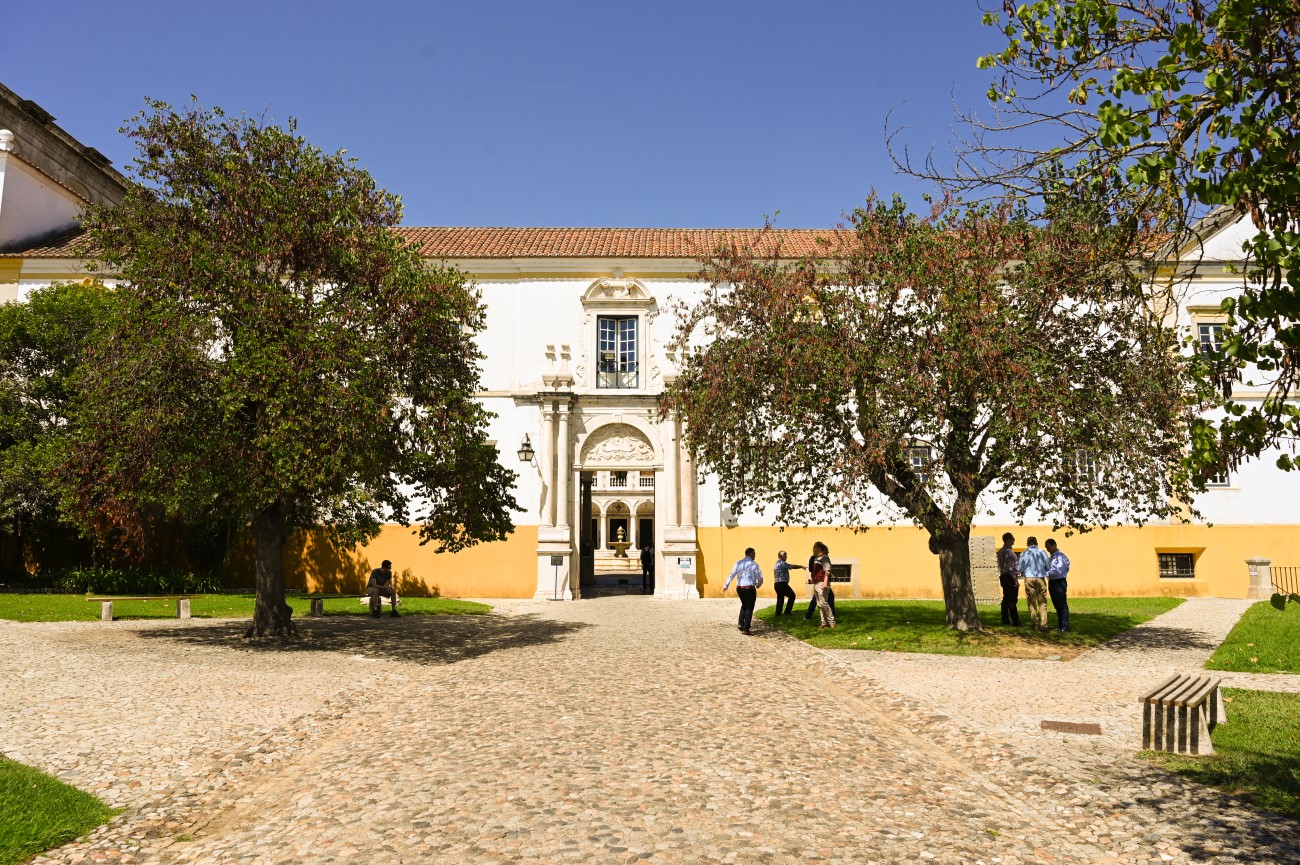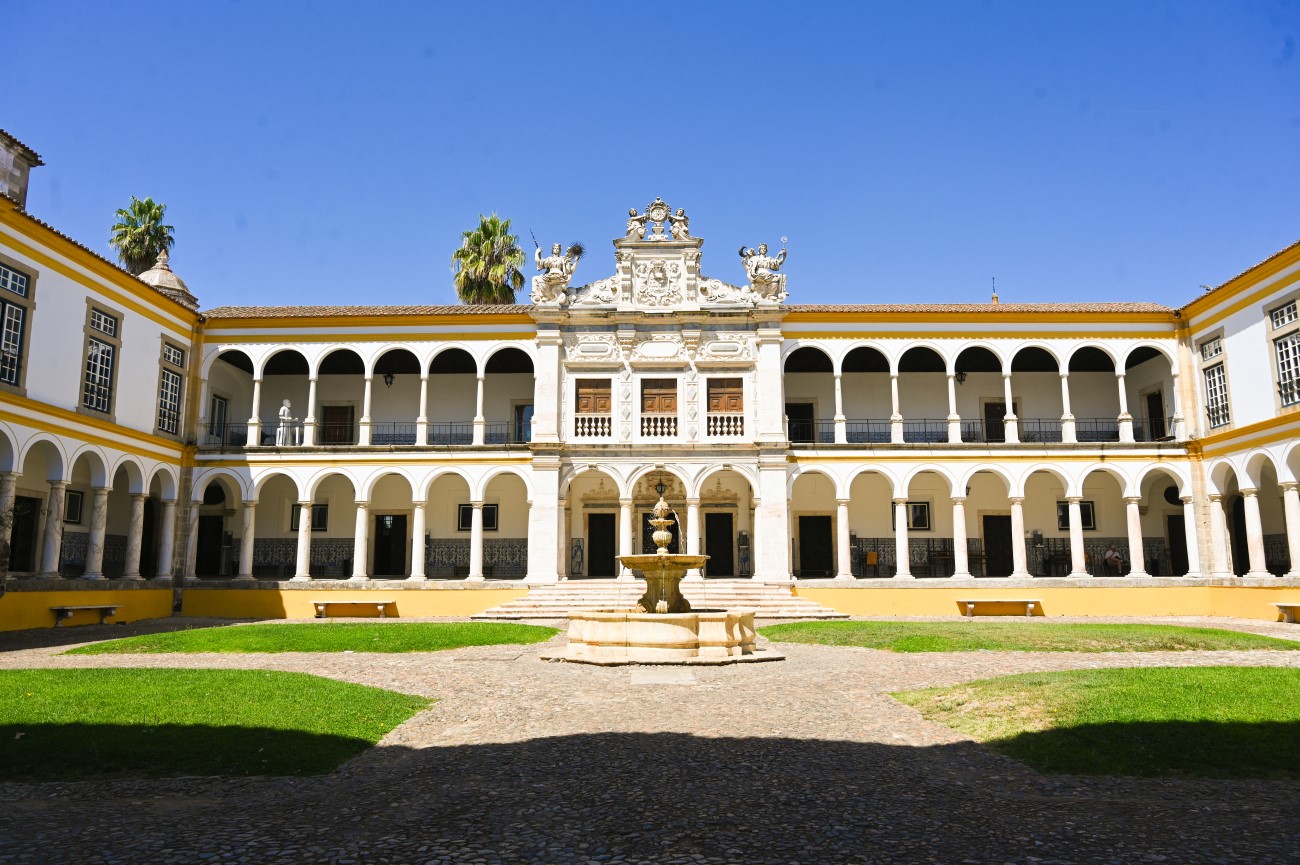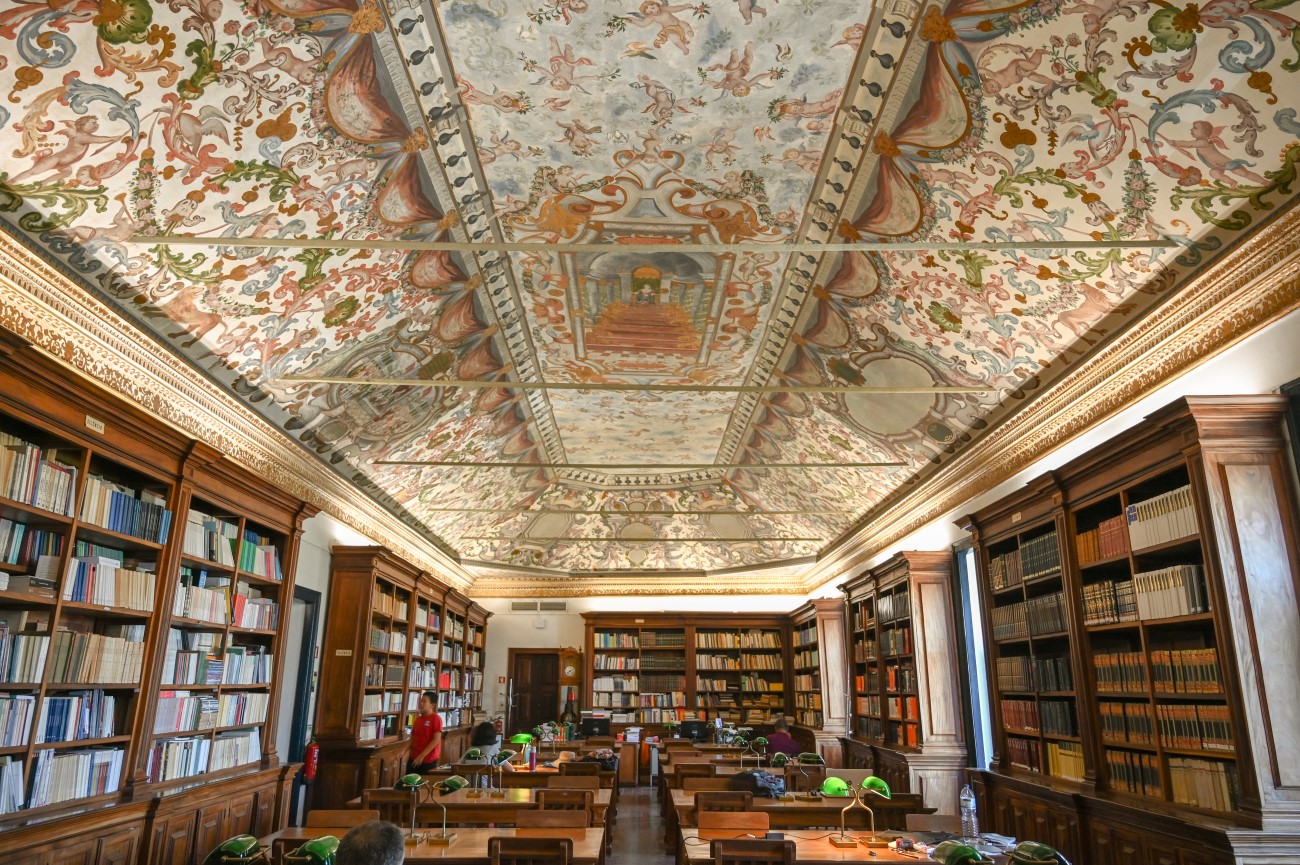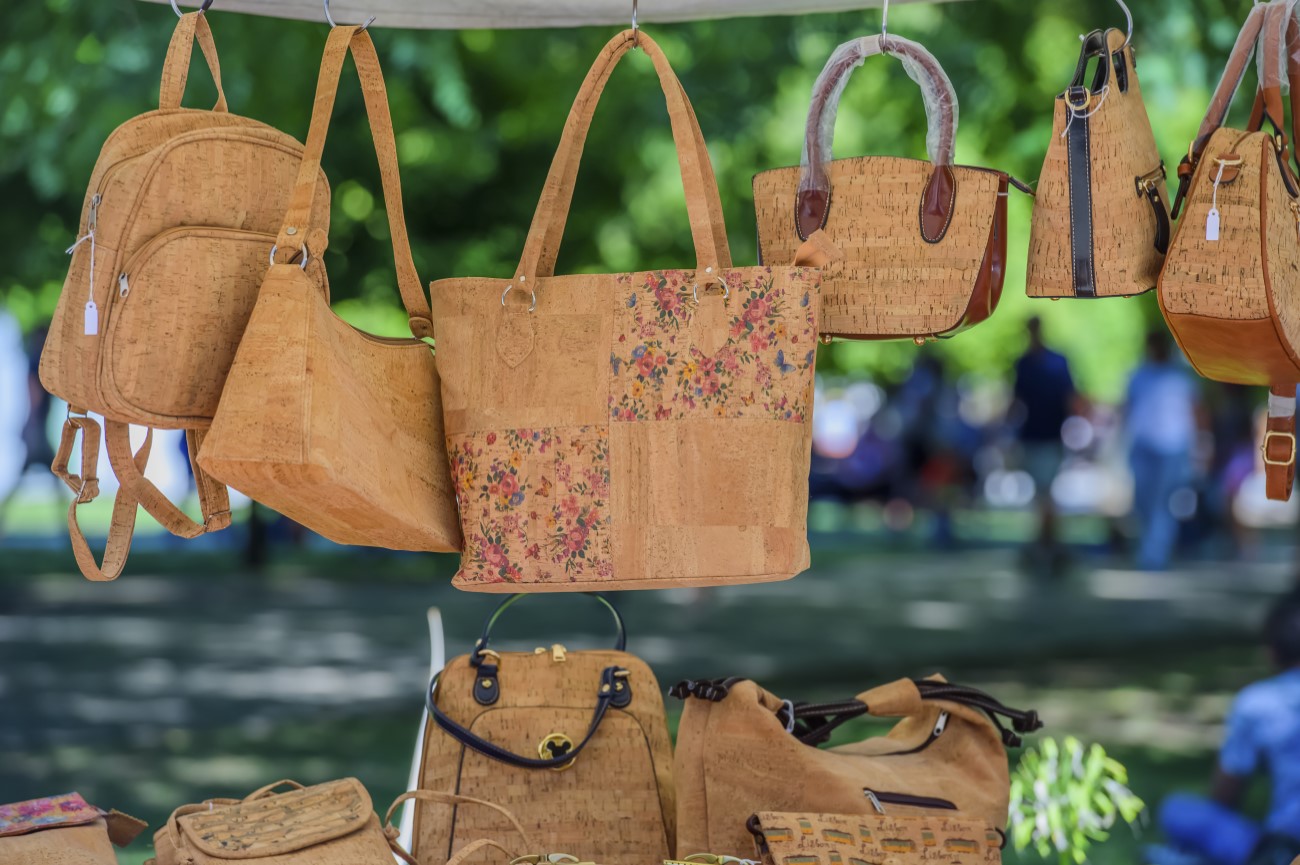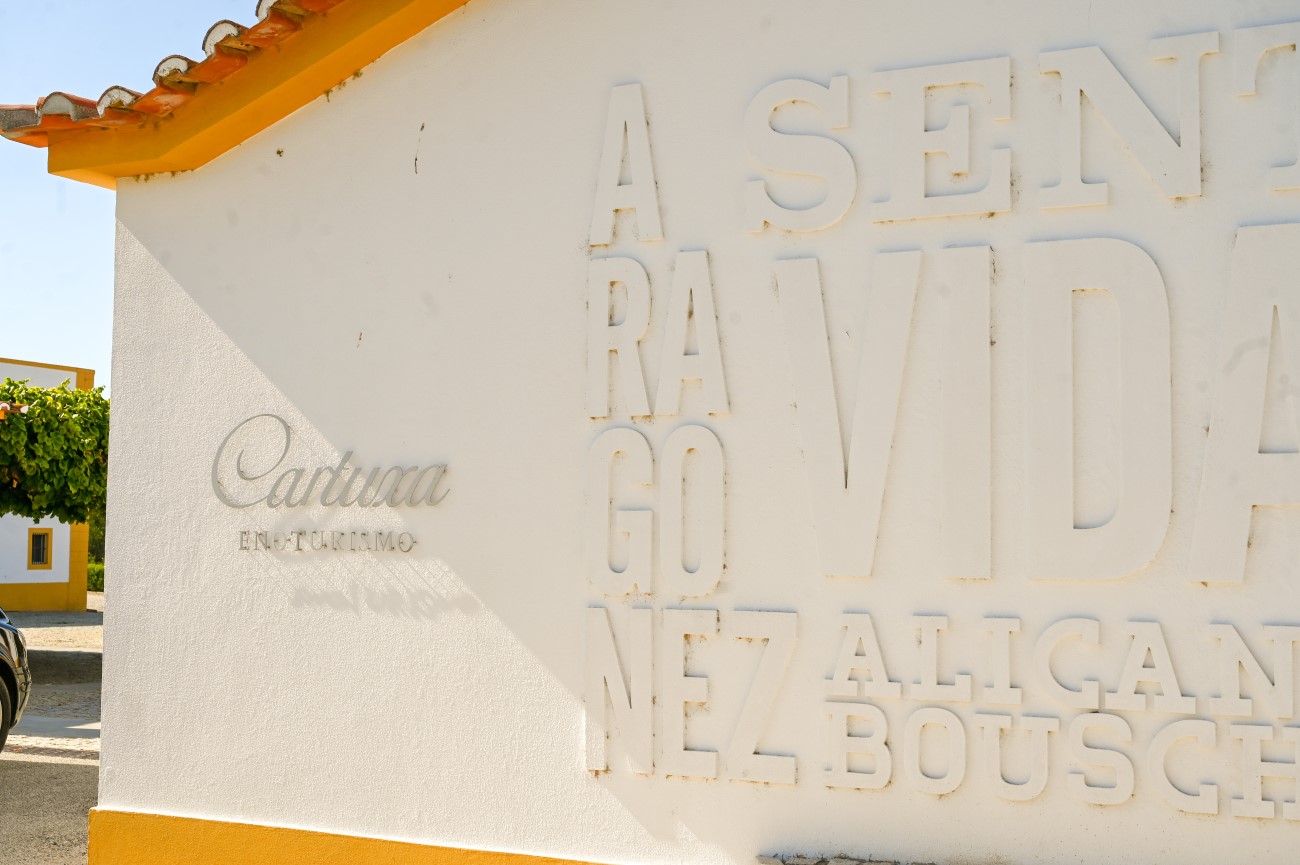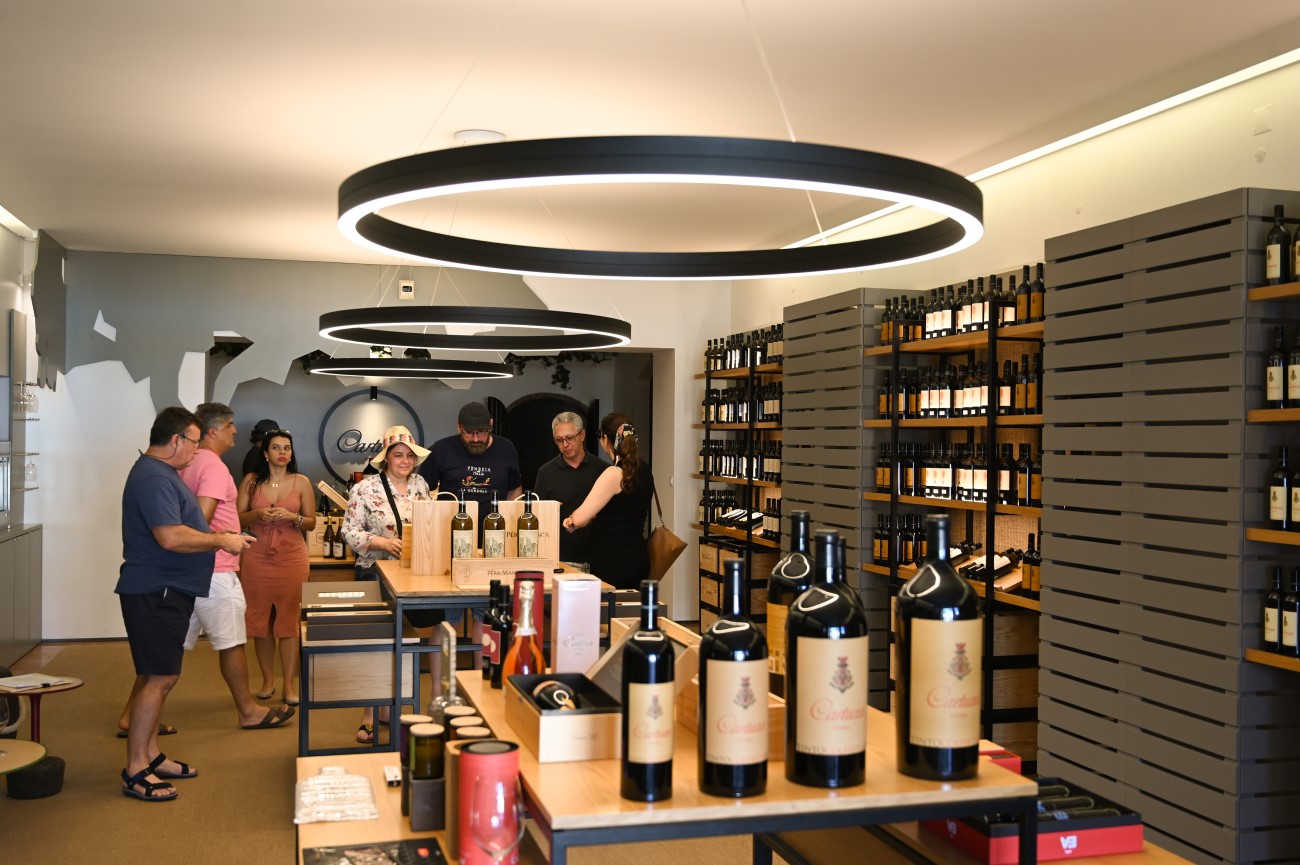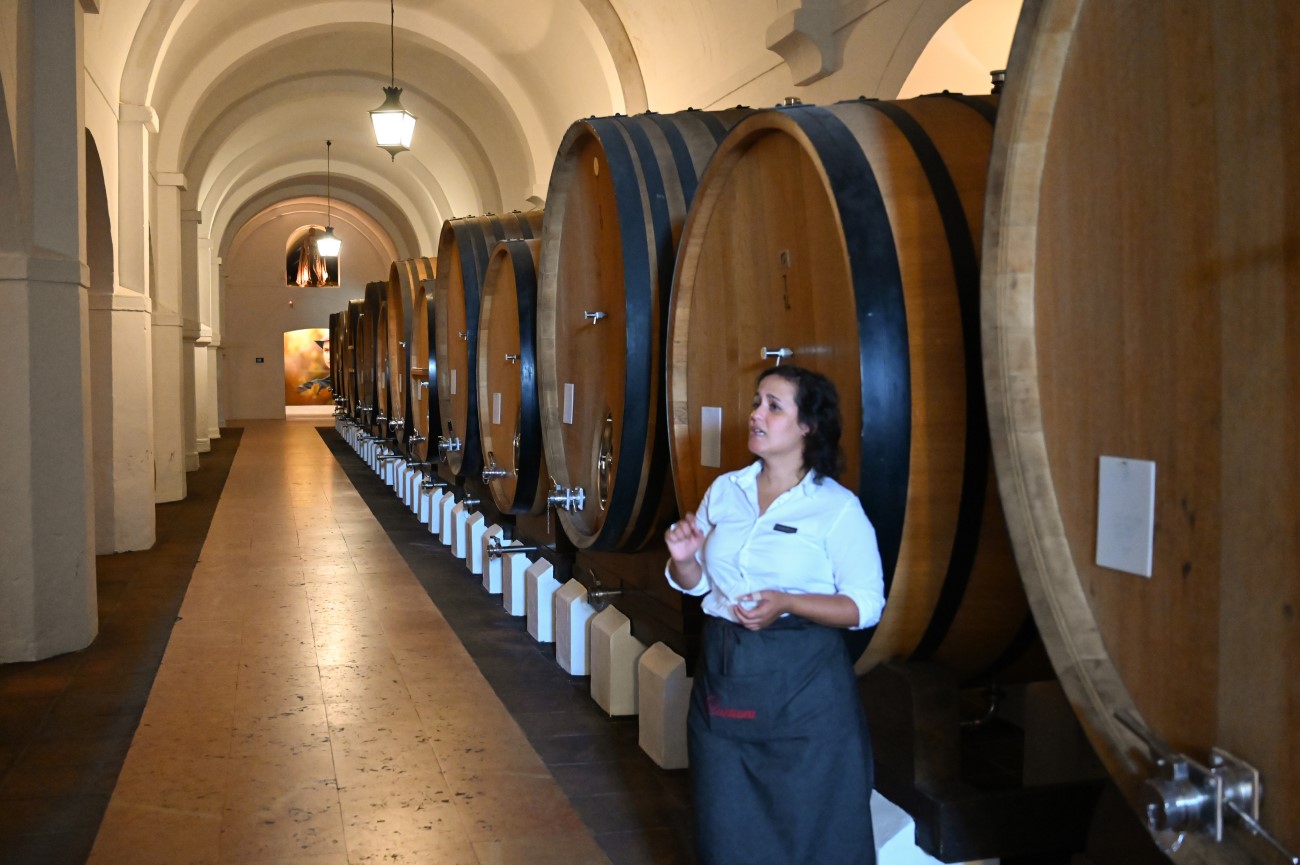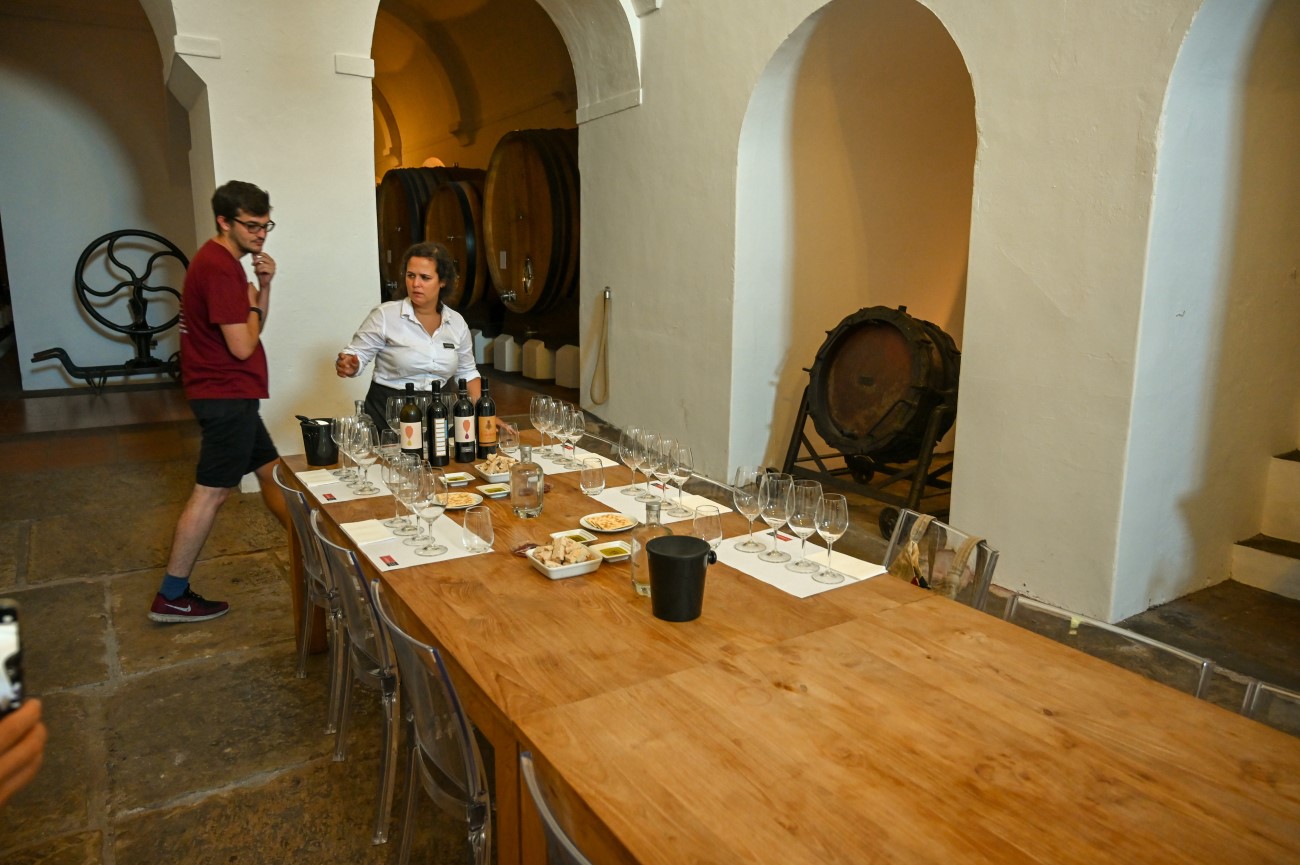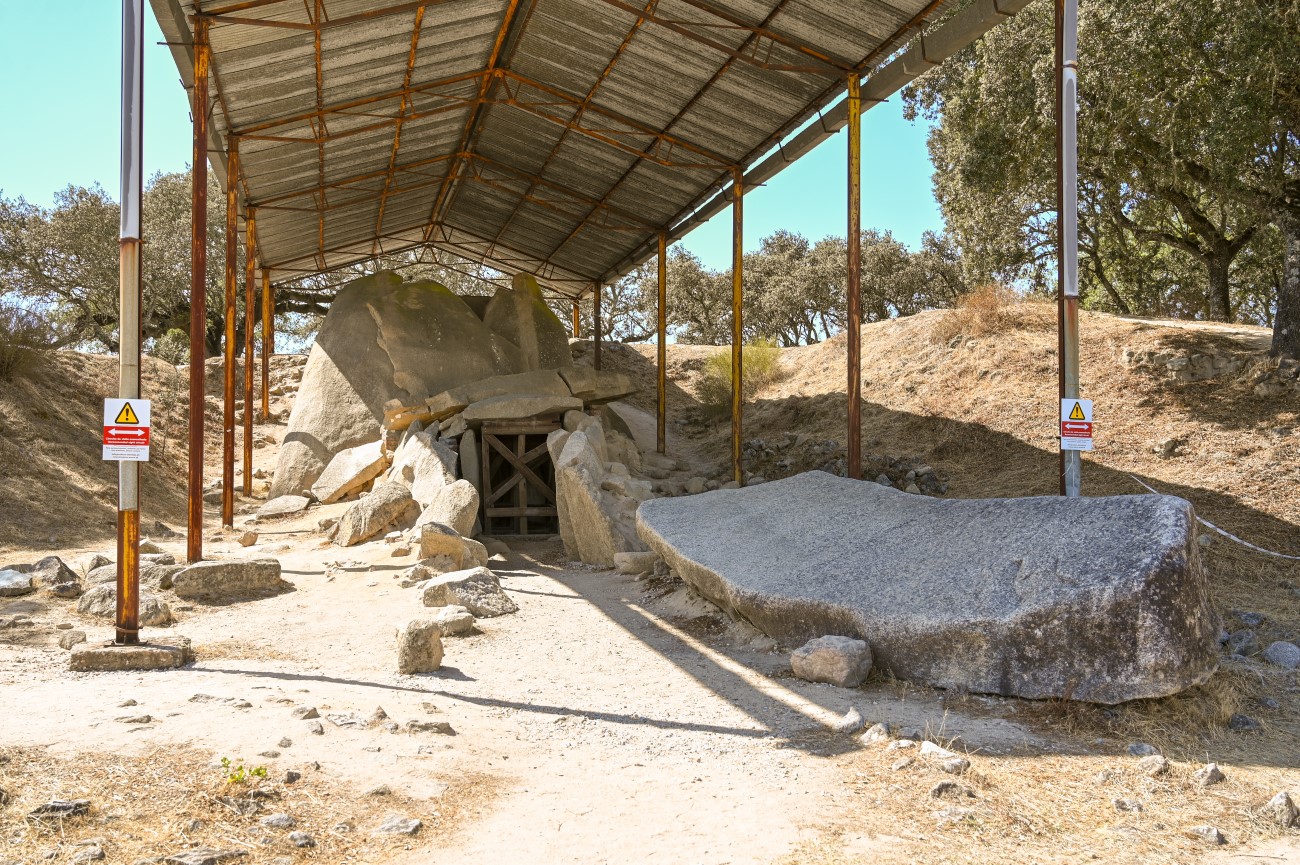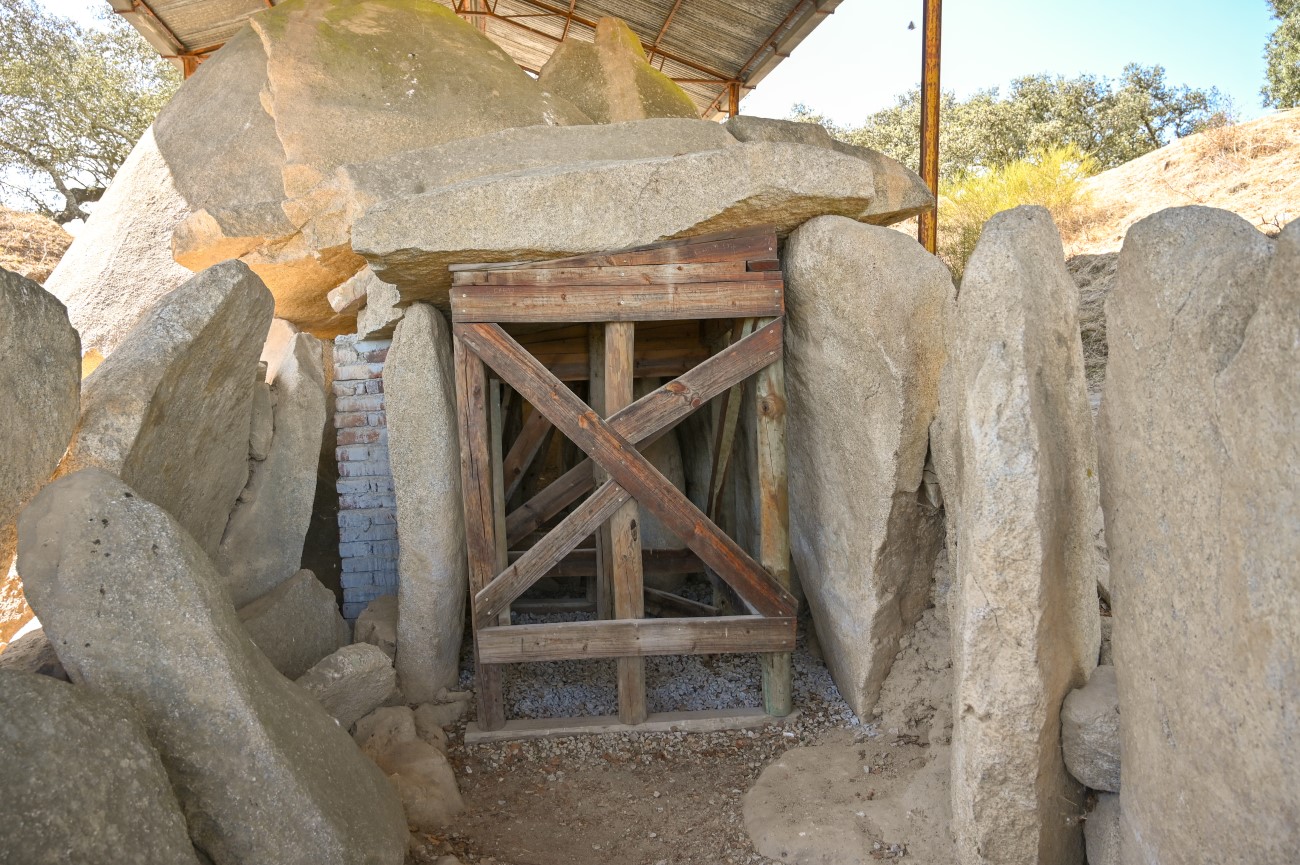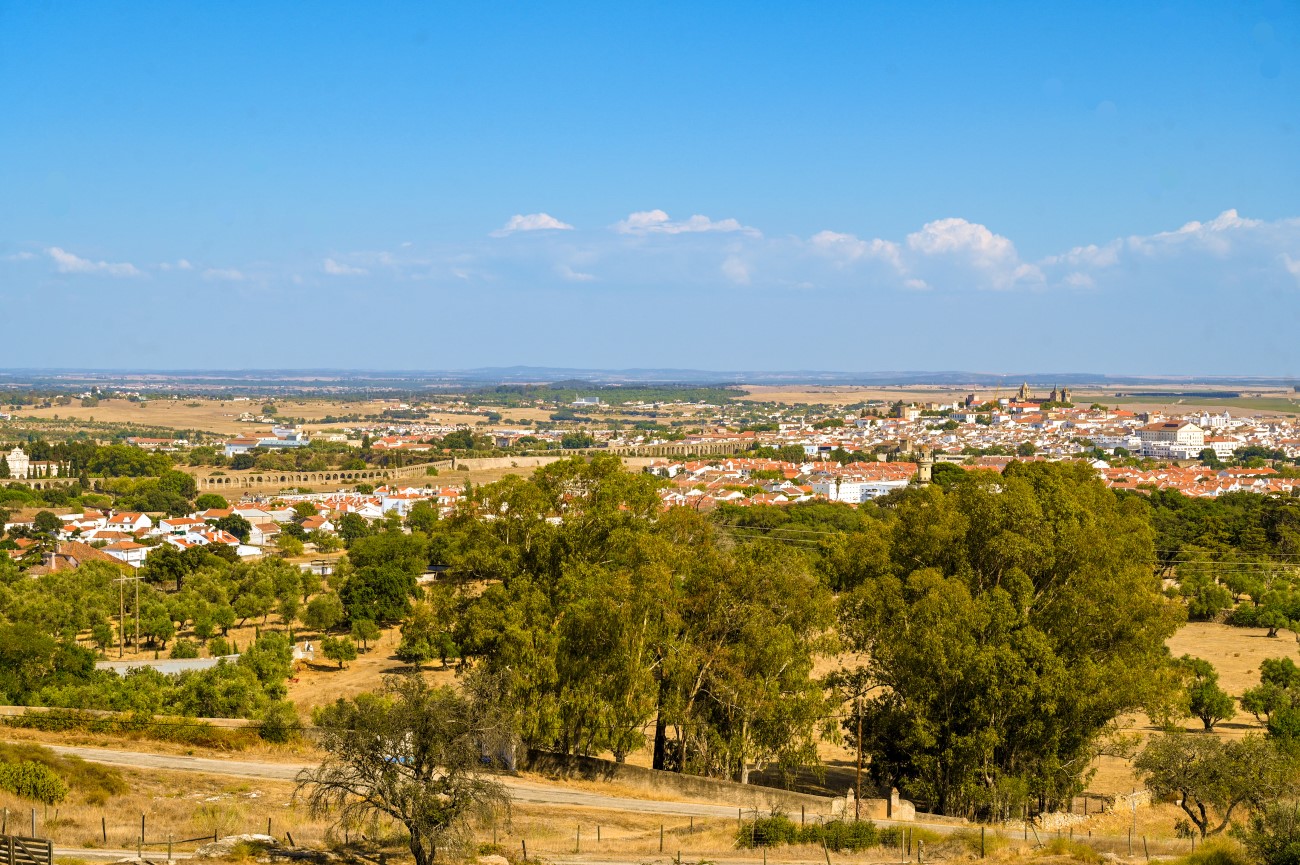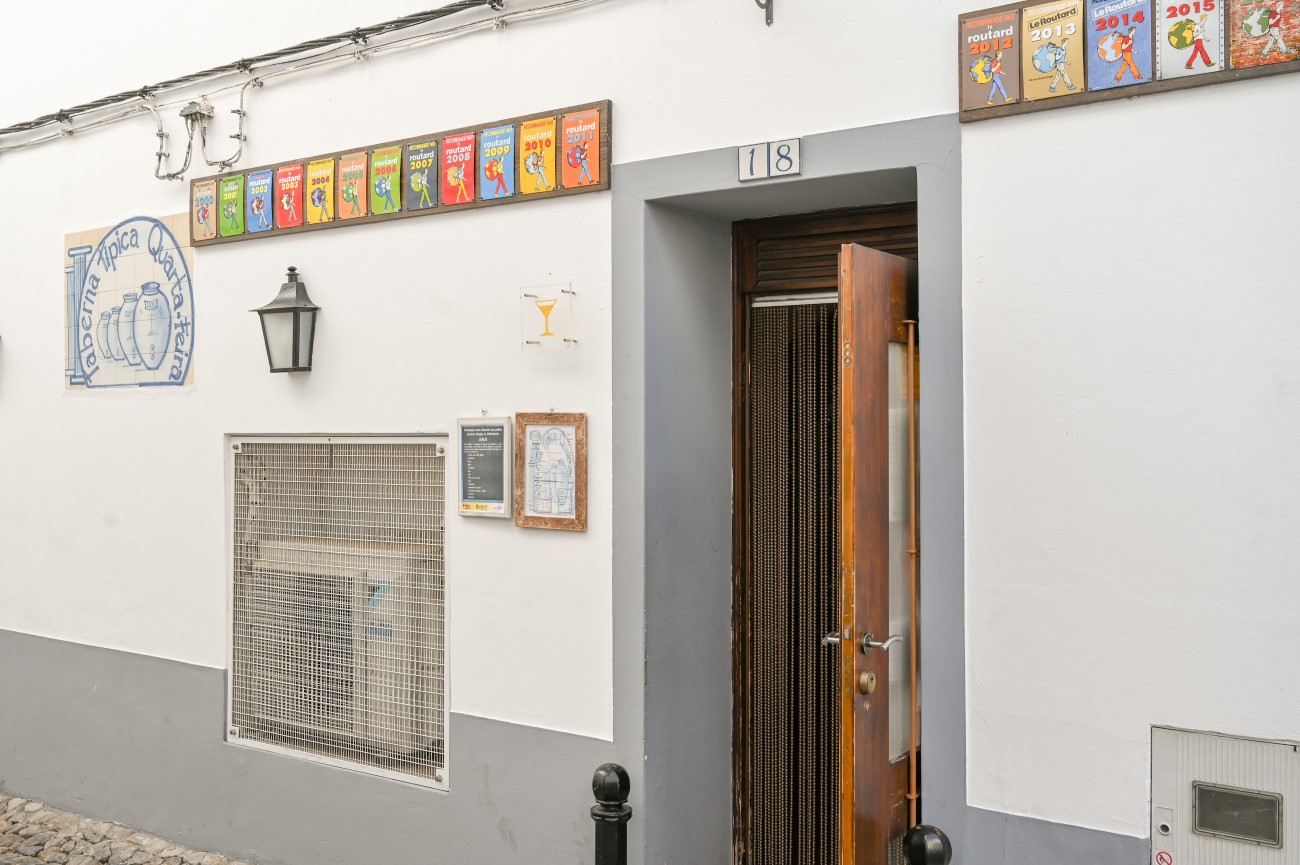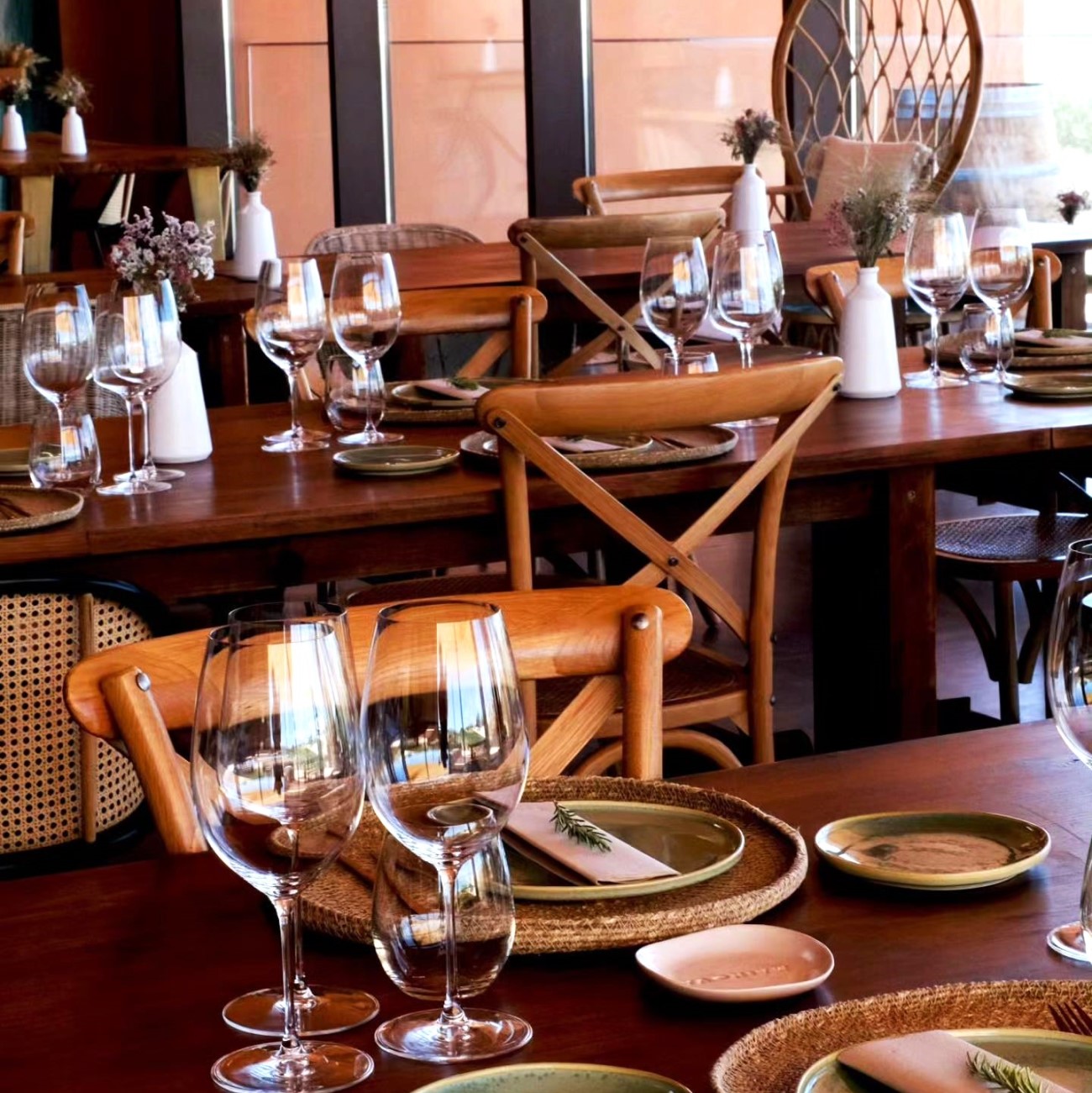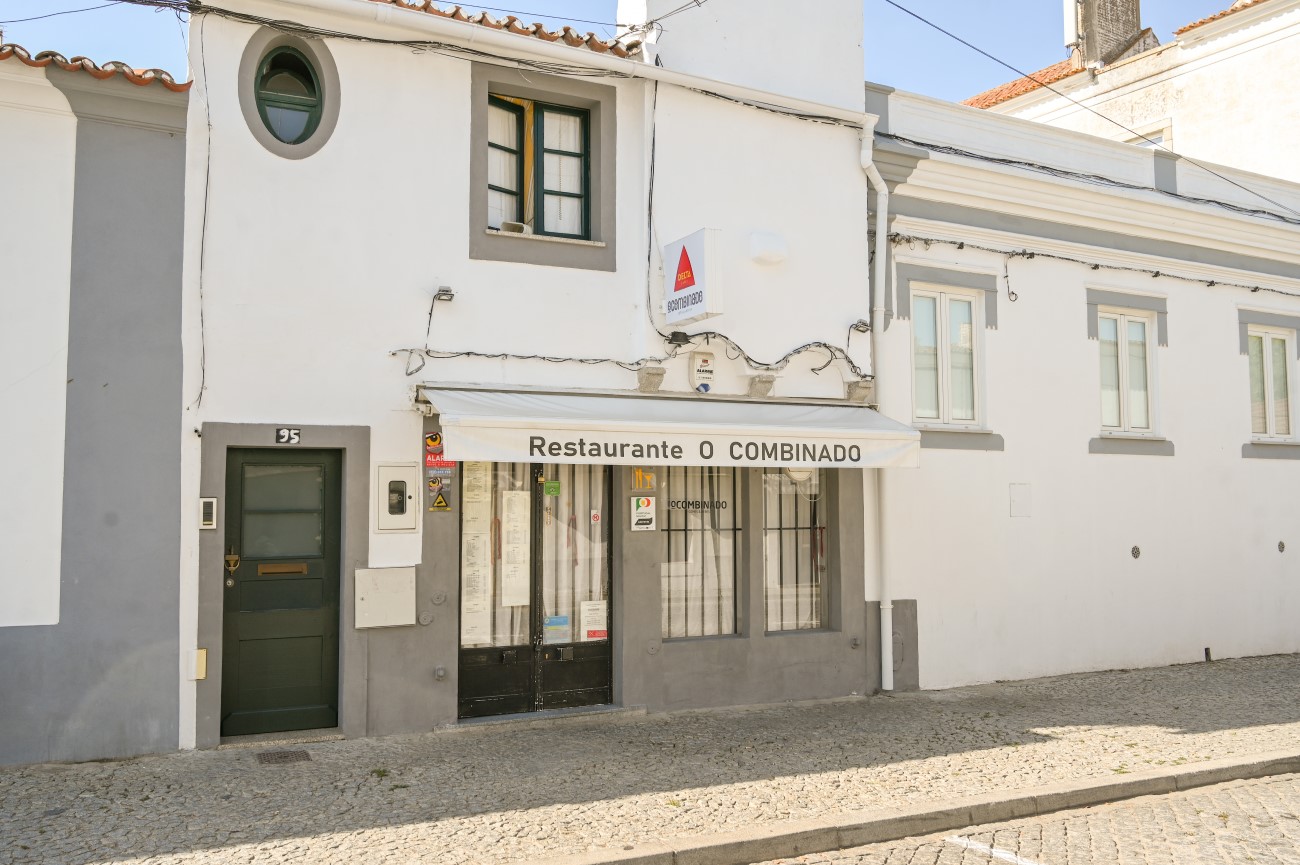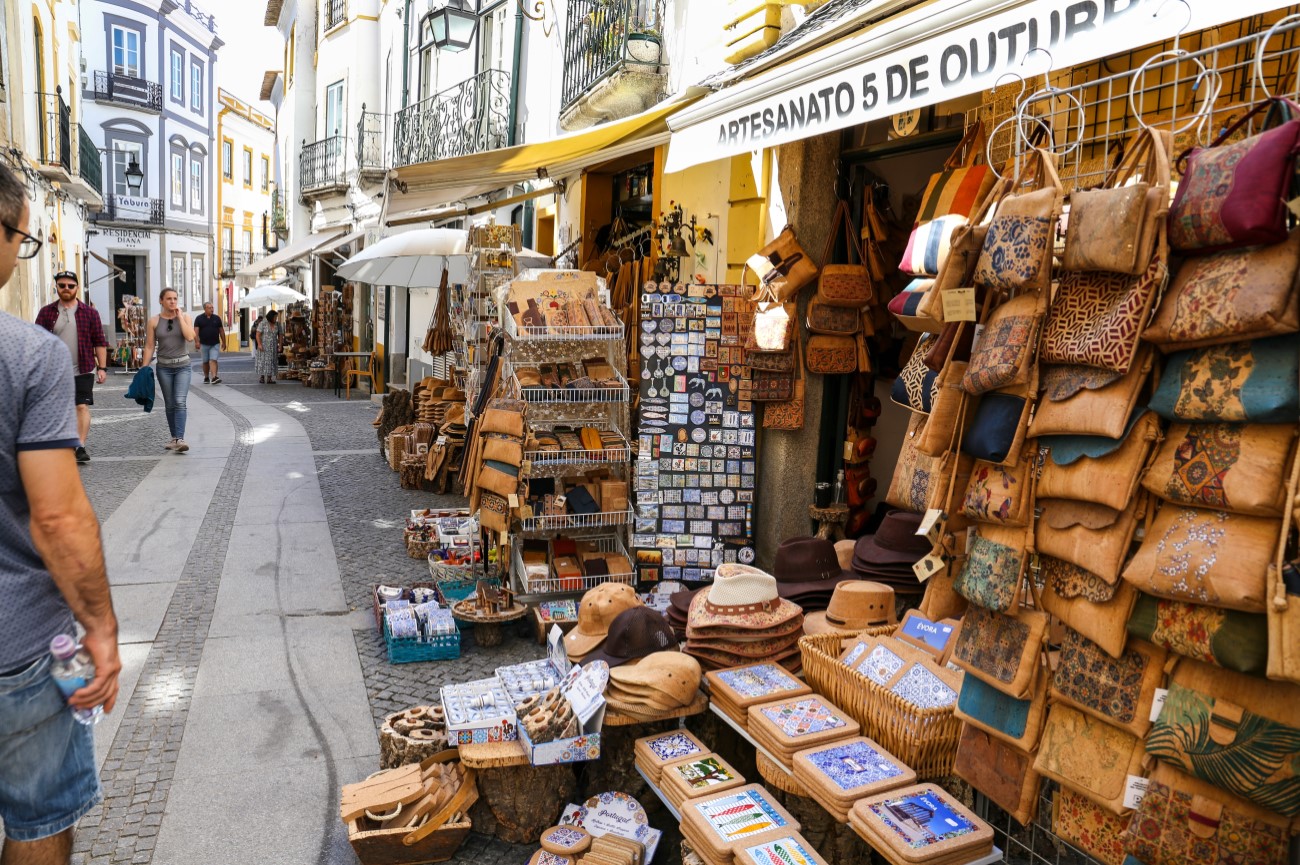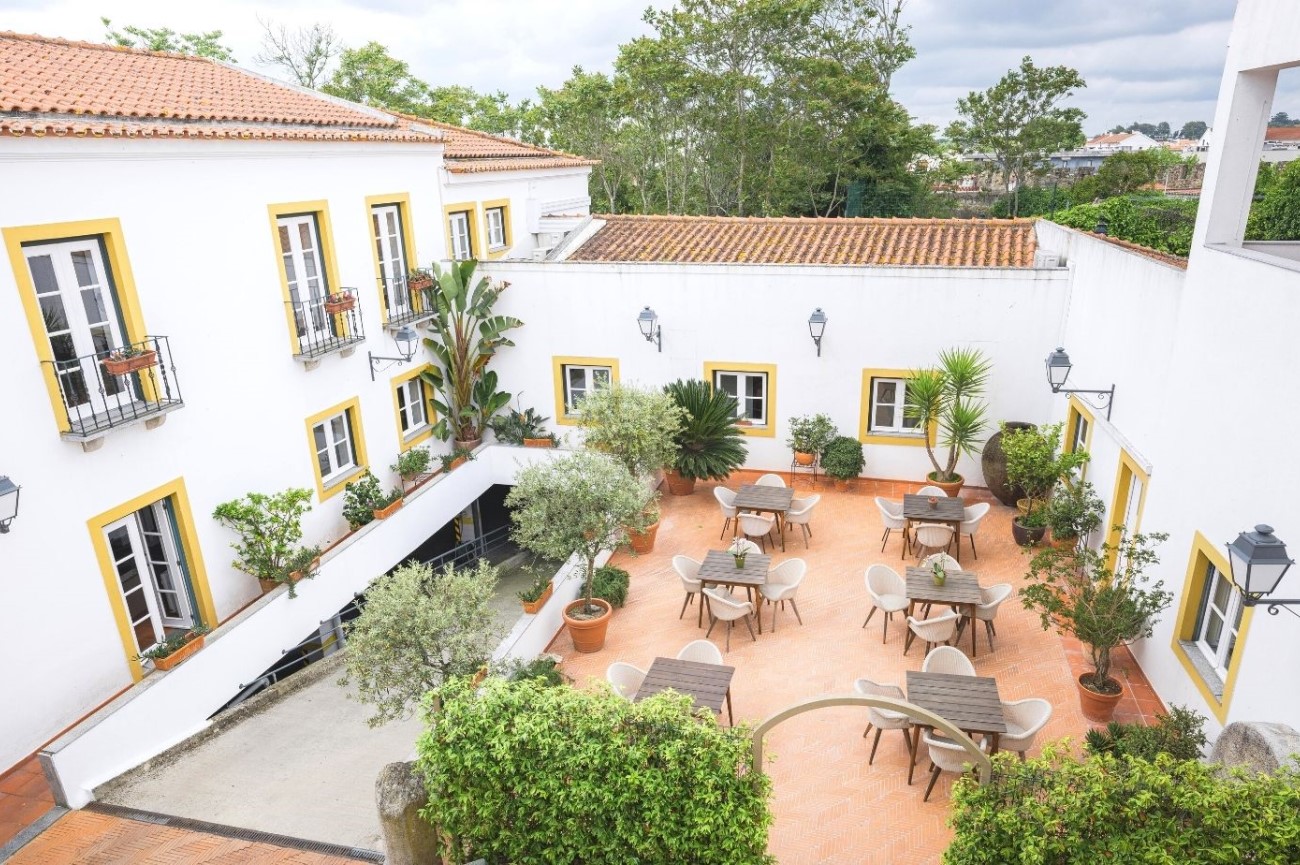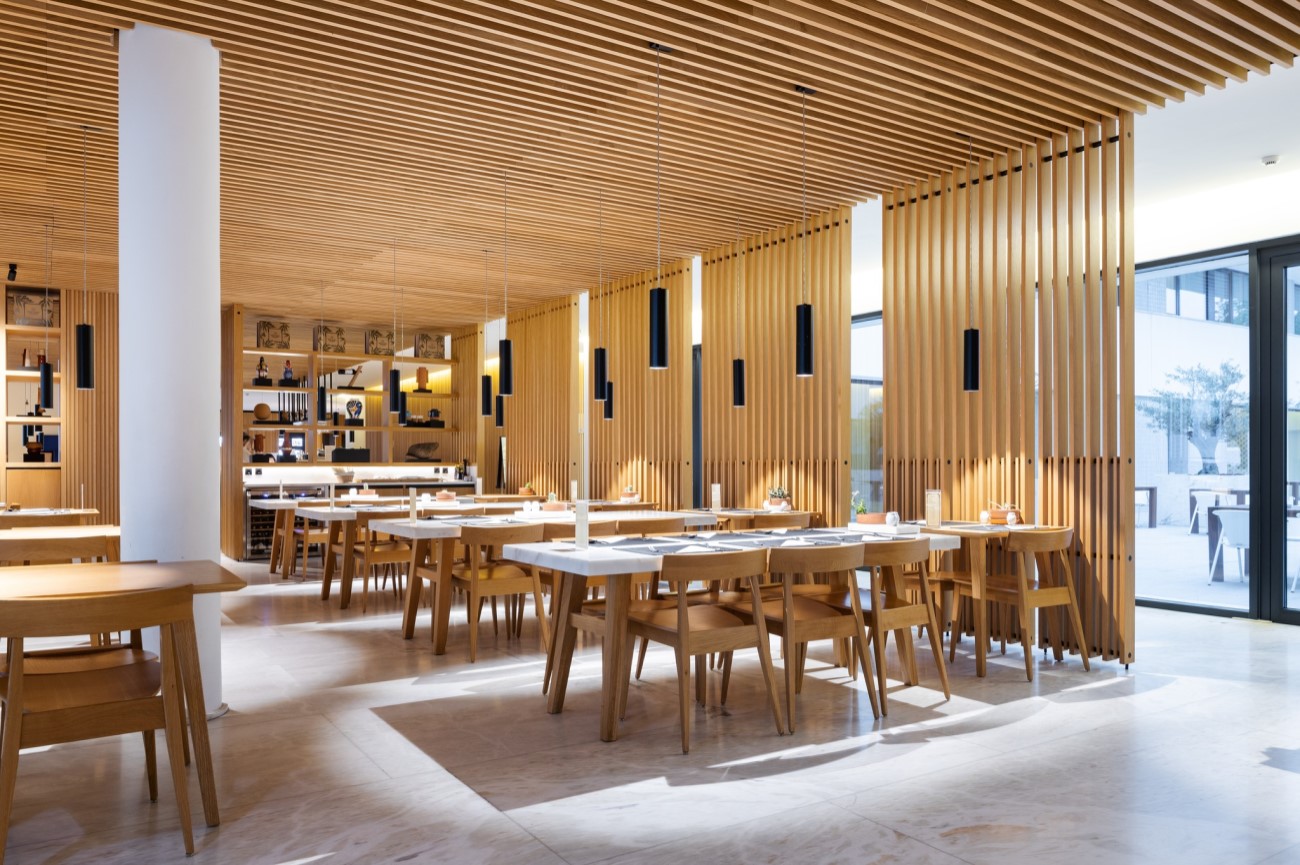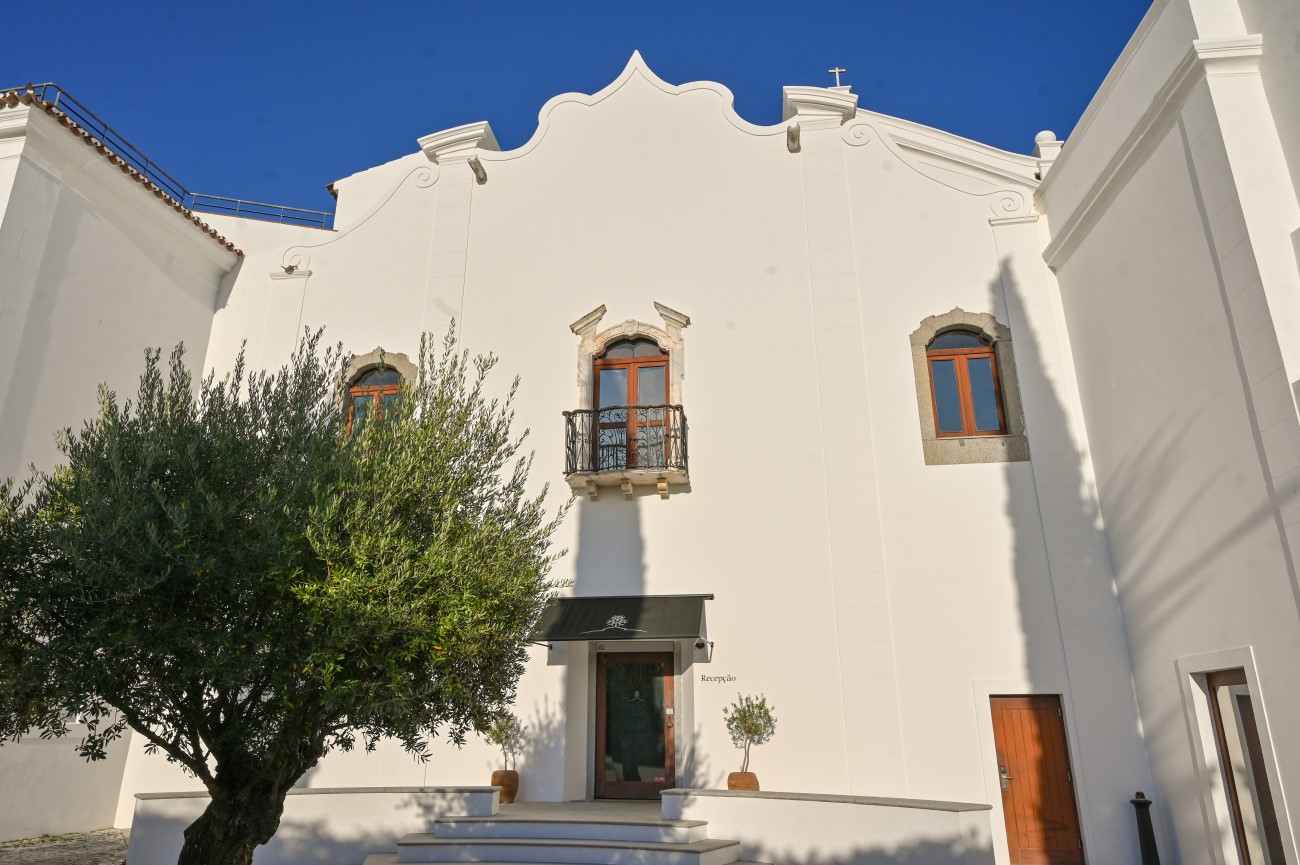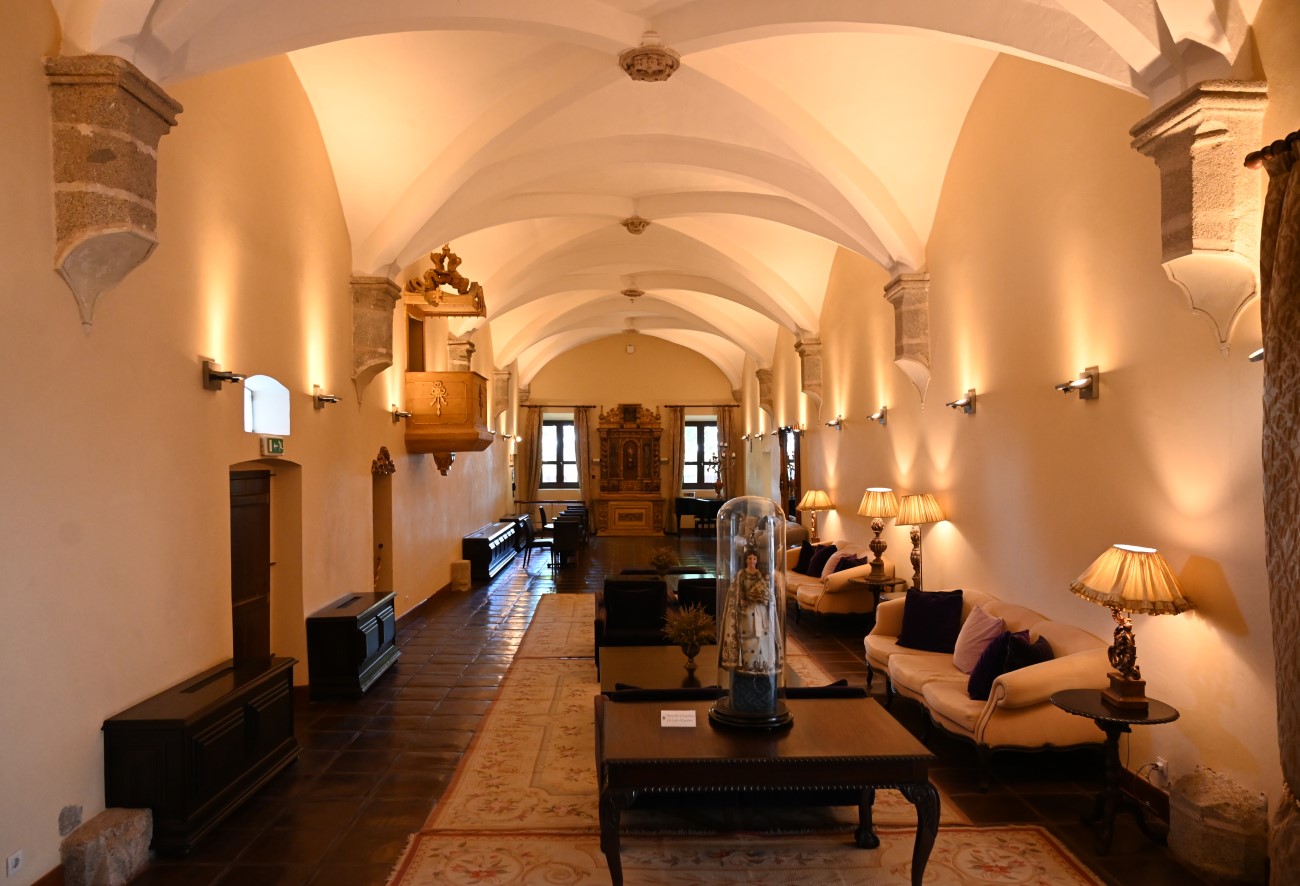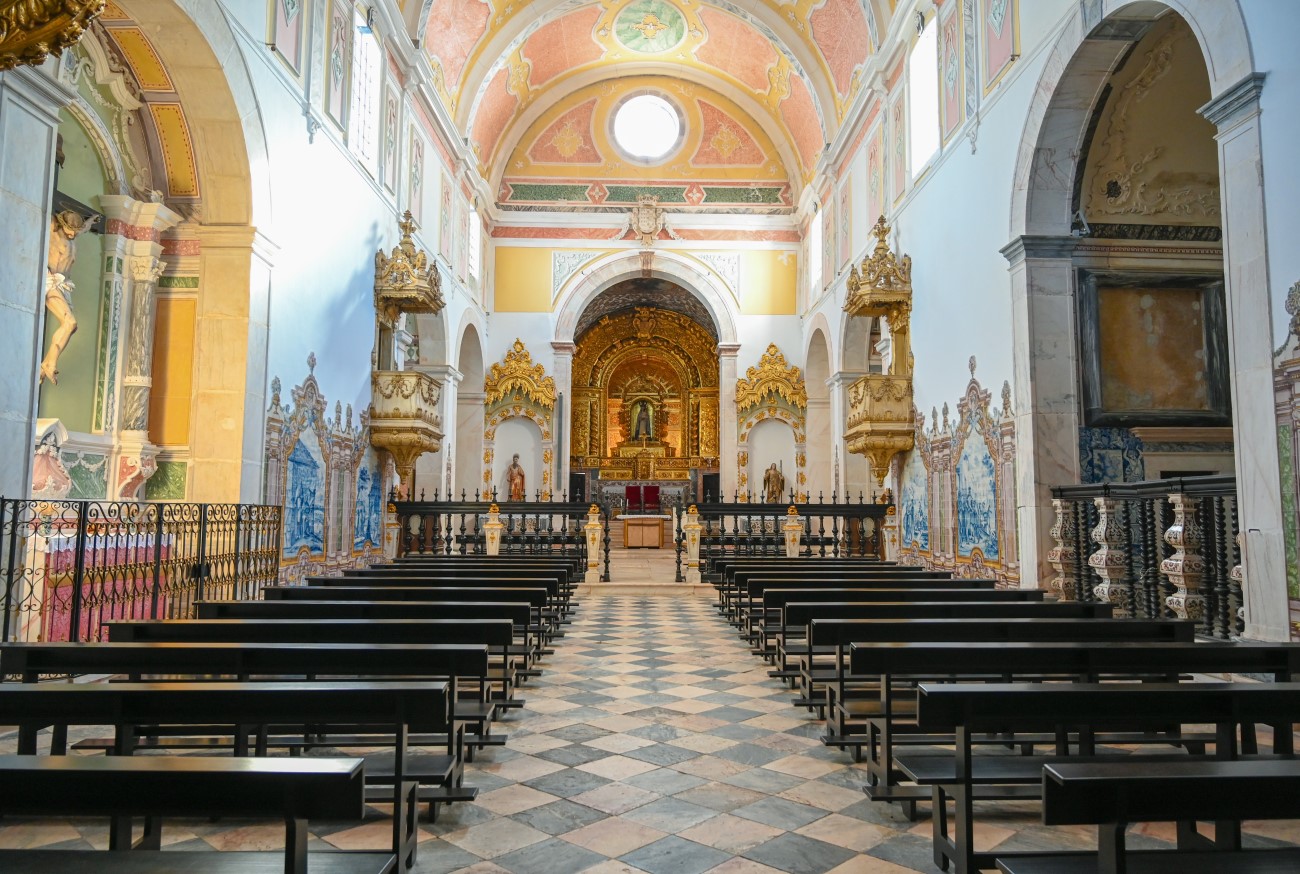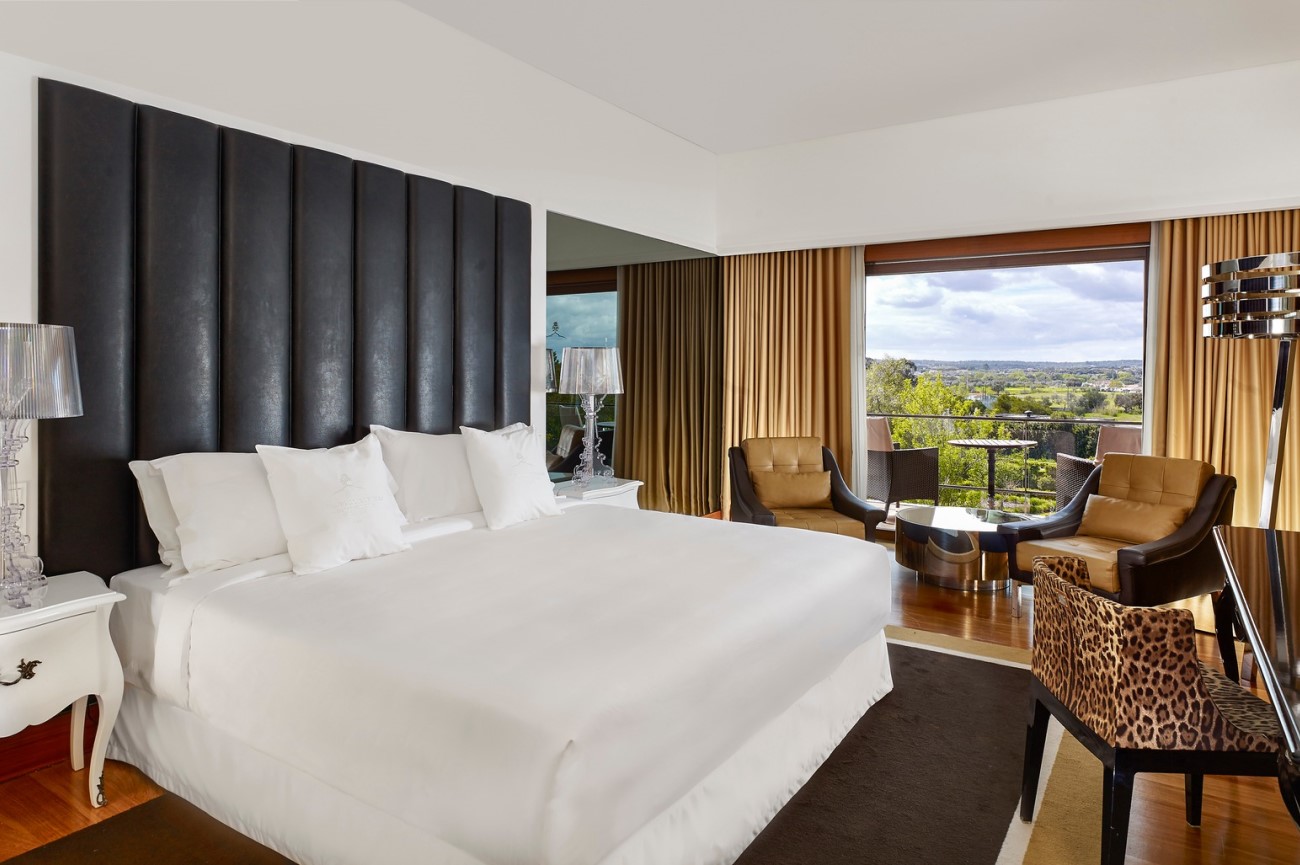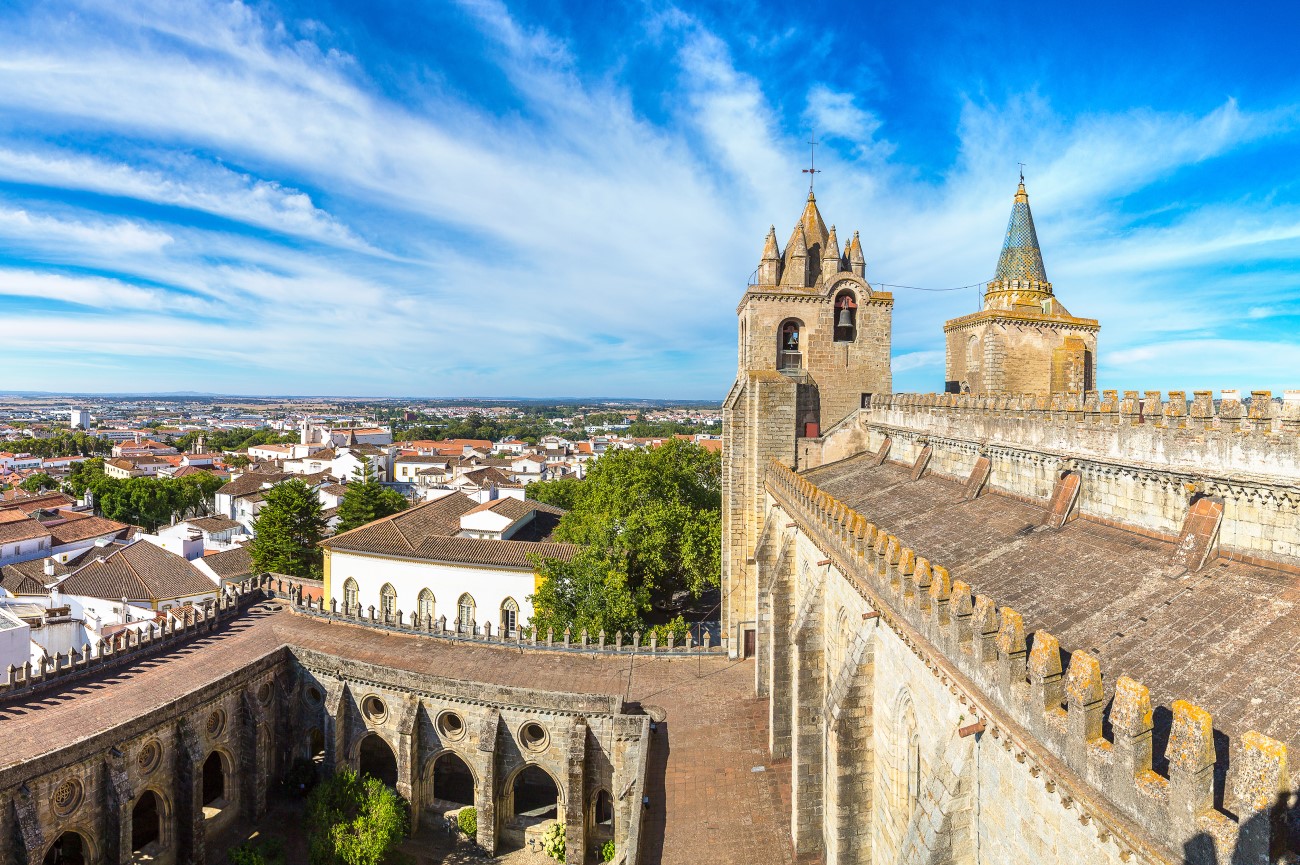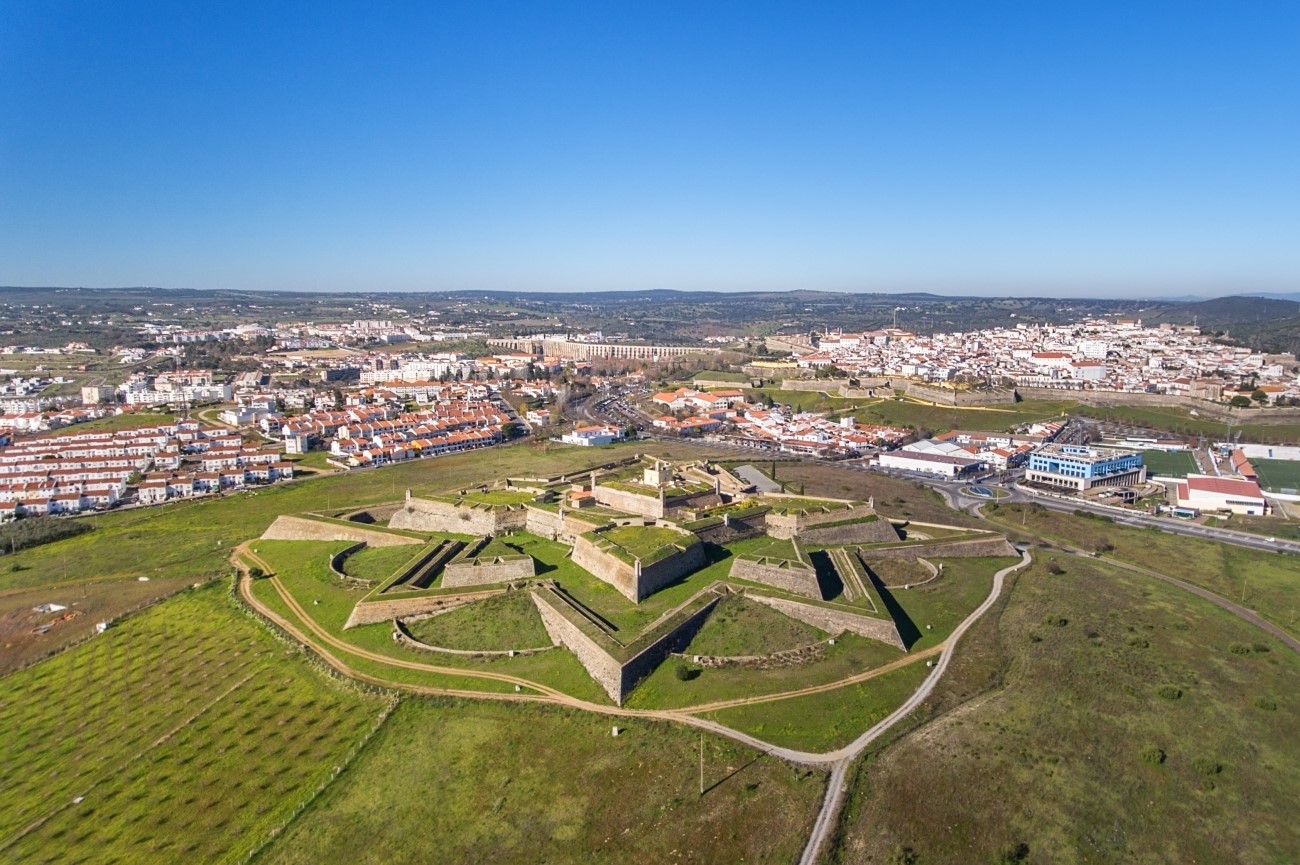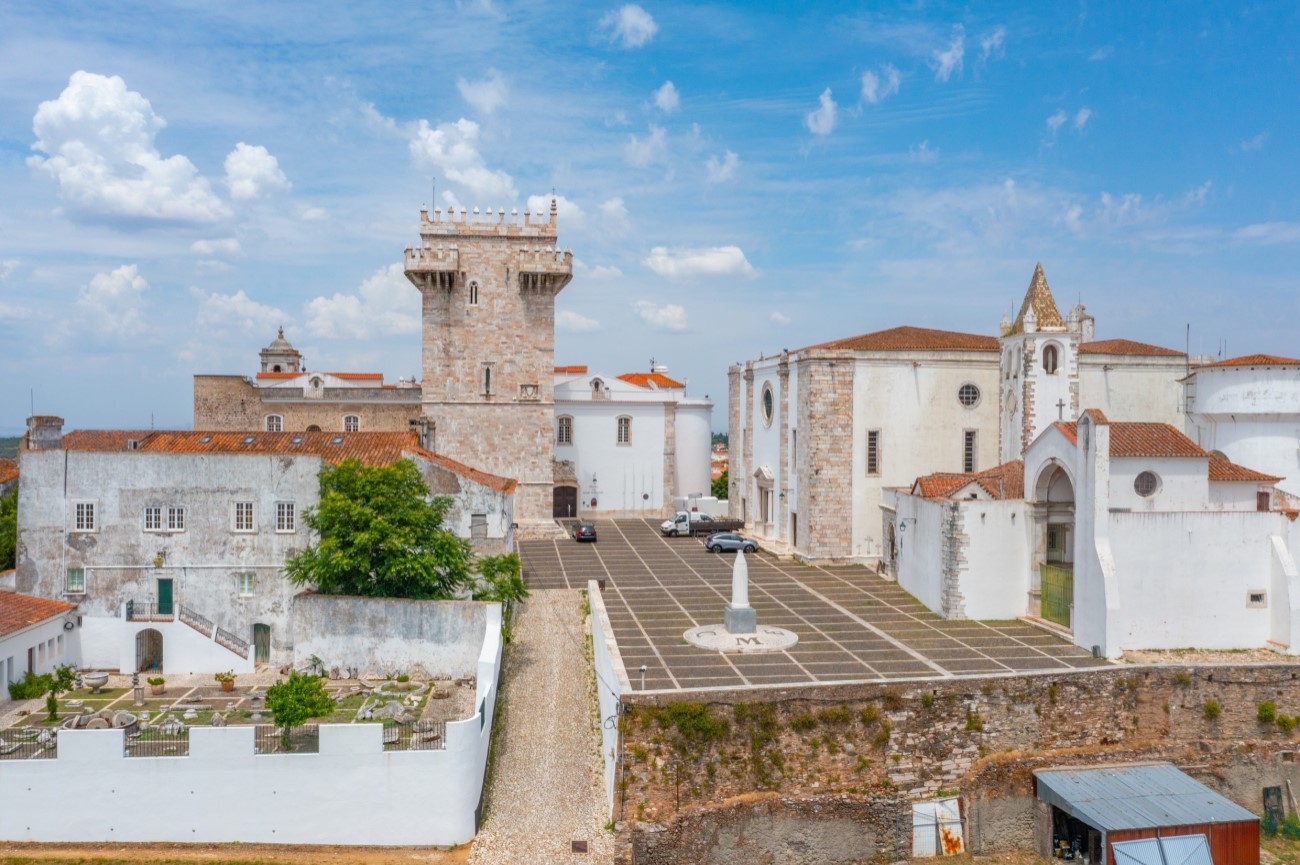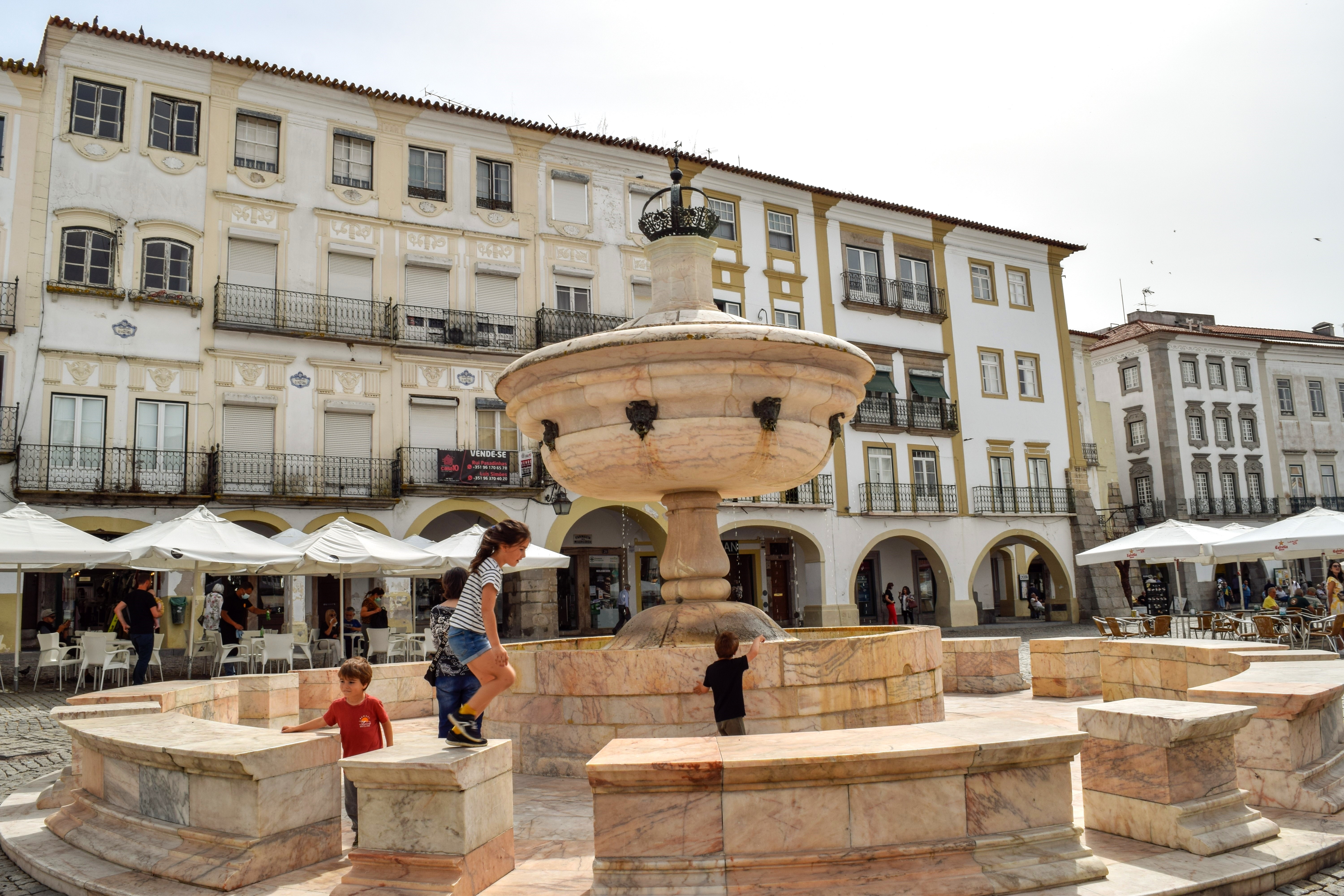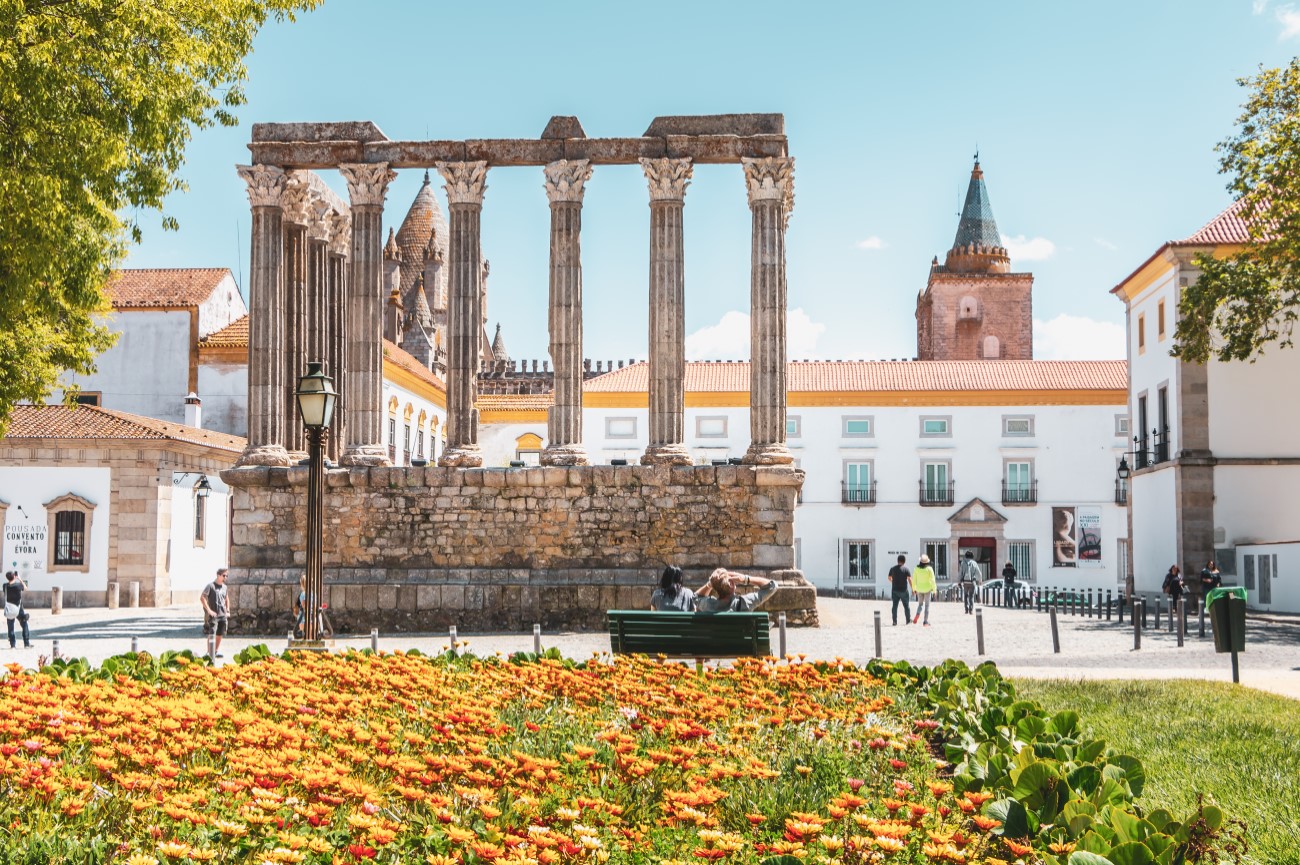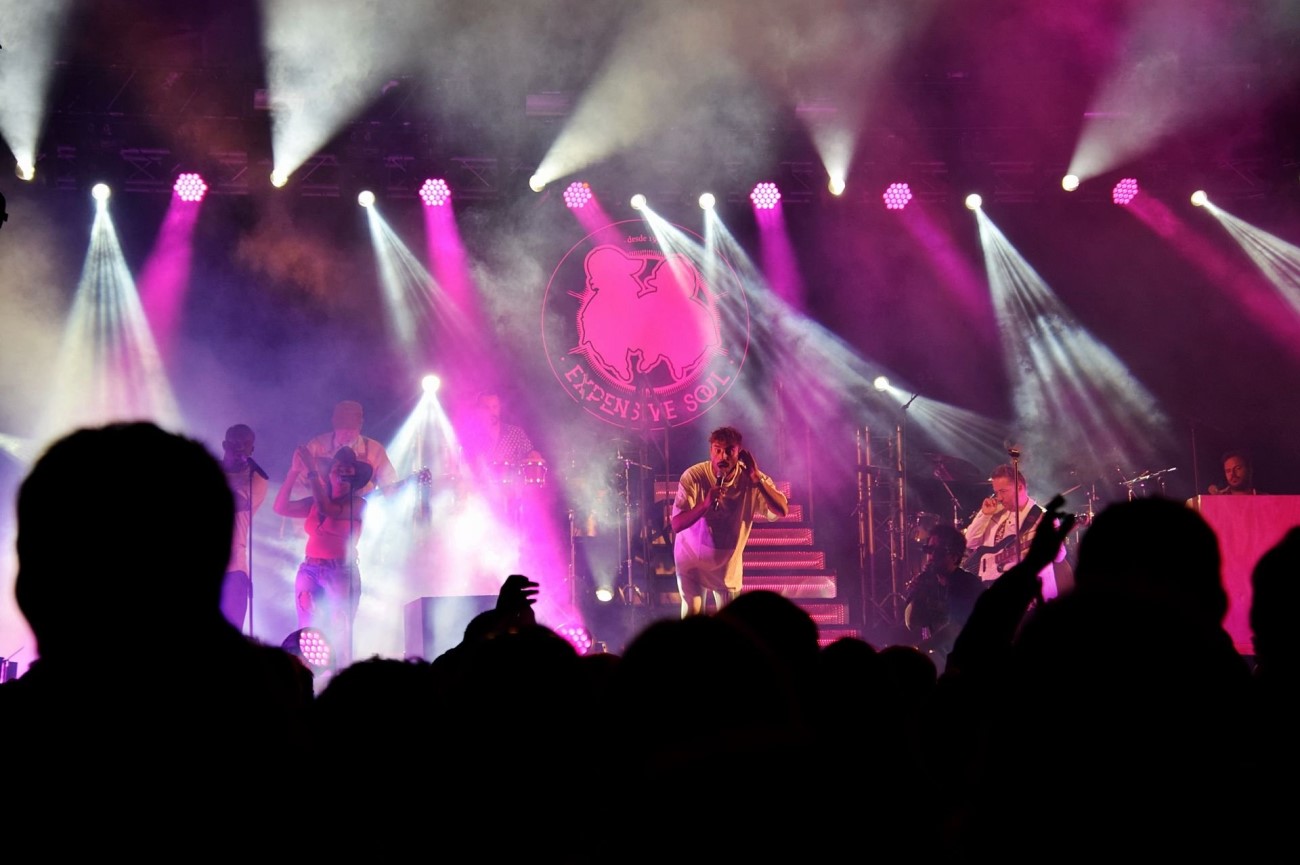Things To Do in Évora, 1-day itinerary
Home to Neolithic monuments and the only Roman temple in Portugal, Évora lives and breathes history.
The city was founded by the Romans, fortified by the Moorish and became the residence of Portuguese kings in the 15th century.
Today, Évora is an open-air museum surrounded by historical monuments and a dozen churches. Évora’s cathedral boasts incredible views of the city, while the Church of São Francisco wows visitors with its eerie bone chapel.
Most attractions are located within the historic centre which has been considered a UNESCO World Heritage Site since 1986. While you can see the main sights in one day, you can also spend a few extra days and explore the rest of the Alentejo region from here.
If you’re still wondering what to do in Évora, we’ve created an itinerary below including the main attractions and other activities you shouldn’t miss.
Things to do in Évora - Morning

Start your morning in Évora with a tour of the city’s main attractions. While there are many churches around the city, you can’t miss a visit to the Church of São Francisco and its Chapel of Bones.
Then make your way to the historic centre, where you’ll find the Roman temple of Évora.
From there, you can explore other nearby attractions like the Diana Garden or Évora’s University, one of the oldest universities in Portugal.
Since you’re in the capital of the Alentejo, make sure to try the local cuisine for lunch in one of the city's restaurants.
Here’s a list of things to do in Évora on your morning walk.
Visit the Chapel of Bones
Set inside the Church of São Francisco, this chapel has entire walls lined with human bones and skulls. These remains belonged to Franciscan monks and were recovered from nearby crypts and cemeteries in the 16th century.
Before you enter the chapel, you’ll see an inscription saying: “Nós ossos que aqui estamos, pelos vossos esperamos”, which translates as “We bones that are here, await for yours”. This sentence is here to remind us of the transitory nature of life.
As you step inside, you’ll be astonished by the number of bones on display. Even without counting them, you can tell there are at least a thousand bodies in the room. These bones are not just stacked on top of each other, though. They also form interesting patterns, as you’ll notice on the pillars.
There’s not much light in the room, which contributes to the eerie atmosphere of it all.
Climb up Évora's Cathedral
As you walk towards the historic centre, it’s hard to miss Évora’s Cathedral and its conical spires. The cathedral is so large it almost looks like a fortress from a distance.
While it dates from the 13th century, it took several phases to complete it, which is why you’ll notice a mix of architectural styles from the Romanesque to the Gothic.
The whole building is open to visitors, including the Baroque chapels and the Gothic cloisters. The best part, however, has to be the rooftop terrace overlooking the city.
If you have time, you can also visit the treasury, which features rare religious pieces made out of gold and silver.
Capture the Roman Temple of Évora
There are Roman ruins spread all over Évora, but the Roman Temple is the city’s most famous attraction.
Built around the 1st century B.C., it’s one of the best-preserved Roman structures in the Iberian Peninsula. Some say the temple was devoted to the goddess Diana, but there is no proof of that.
It seems odd, but the temple was not always as prominent as it is today. For centuries, it was hidden inside a fortress, and it was only restored in the 1870s. This is probably the reason why it’s in such good condition. Now, it’s impossible to leave Évora without capturing this historical monument.
Relax at the Diana Garden
After seeing the Roman temple, take a stroll around the historic centre. Enjoy a wander around the Diana Garden, a small green area located right next to the temple. The garden has a few benches and a kiosk where you can grab a coffee.
Visit the Cadaval Palace
Next, visit the Cadaval Palace, one of the many noble houses scattered around Évora. The palace has been the home of the Dukes of Cadaval since the 14th century. While it’s a private residence, they often host temporary art exhibits. Inside is also a restaurant serving Portuguese food with a contemporary twist.
Admire the tiles at Igreja dos Lóios
A few steps from the palace is a private church known as Igreja dos Lóios. Erected in the 15th century, it features a Gothic-style doorway and stunning Portuguese tiles in the interior. You can buy combined tickets with the palace or visit the church separately.
Explore the University of Évora
Continue walking towards the University of Évora. Dating back to the 16th century, it’s one of the oldest universities in Portugal, second to Coimbra. The most remarkable building at the university is the Colégio do Espírito Santo, with its beautiful facade and cloisters leading to a quiet courtyard. If you have the chance, make sure to visit the university library and look up to admire the gorgeous painted ceiling.
Map for this Evora tour, Portugal
Things to do in Évora - Afternoon

Now that you’ve ticked off the main attractions in Évora, you can enjoy other activities nearby.
Portugal is one of the biggest exporters of cork, and one of its oak forests is just a few miles away from Évora. Many souvenir shops in the city sell a variety of cork items, but if you want to learn about the source, we suggest taking a tour of Évora’s cork factory.
After that, why not take a trip to the wineries? After all, you’re in the Alentejo, one of the best wine regions in the country.
For a bit more history, you can drive through the megalithic circuit before returning to the centre for another delicious meal.
Join a Cork factory tour
Portugal is one of the leading producers of cork. Visit the cork factory Cortiçarte near Évora to learn about the different quality levels of cork and the harvesting process. It takes around three harvests to produce good cork. If you want to use cork of the highest quality, it can take up to 50 years!
Cork trees are sacred in this country, and if you own one, you need permission to take it down. Otherwise, you might get fined.
While wine stoppers are the main finish product, there are many other things you can make with cork, including furniture and even clothing.
Visit Évora’s Wineries
There are several wineries in Évora, including Adega Cartuxa, Dona Dorinda and Fita Preta. All of them offer wine tasting tours.
Adega Cartuxa is one of the oldest wineries in the region, dating back to the 20th century. Be sure to try the Pêra-Manca, a brand of their exceptional wines produced since 1990. Besides wine, Cartuxa also produces olive oil. The olive trees occupy an area of around 400 hectares and include several olive varieties like Galega and Cordovil.
Meanwhile, Dona Dorinda specialises in organic wines, and Fita Preta has been recovering long-lost grapes such as Alicante-Branco and Tamarez.
Explore the Megalithic circuit
Long before the Romans arrived, Évora was a Neolithic site. Remains of this period are still visible today in a circuit on the outskirts of the city.
There are two monuments worth capturing in this region—the Almendres Cromlech and the Great Dolmen of Zambujeiro. The first one is a collection of 95 standing stones, and it’s one of the largest settlements in Europe. If you look close enough, you’ll also notice a few geometric carvings.
Further south is the Dolmen of Zambujeiro, a funerary chamber made with granite stones. Most artefacts found here are now on display at the Évora Museum. For a guided tour of the megalithic circuit, you can contact Ebora Megalithica.
Enjoy the sunset at Alto de São Bento
On the way to the city centre, you can stop by Alto de São Bento to catch the sunset. This isolated spot offers incredible views of Évora and the countryside. Standing here, you can see the fields of cork and olive trees and even spot the spires of the cathedral at a distance.
Тaste traditional Évora sweets
Finish the day at Pastelaria Conventual Pão de Rala, which sells a variety of local pastries. With so many sweets on offer, it’s hard to choose just one. We recommend the Pão de Rala. It’s a typical sweet from Évora made with almonds, eggs, sugar, and gila (squash jam).
Map for this Evora tour, Portugal
Best Évora Restaurants
Some of our favourite restaurants in Évora are the Taberna Típica Quarta-Feira, Hibrido and O Combinado. All of them offer delicious meals inspired by the Alentejo cuisine.
- At Taberna Típica Quarta-Feira, the chef decides what to cook each day, so you never know what’s coming. All you have to do is pick a drink and then wait for the food. It usually includes appetizers, a main dish and a dessert. Make sure to book a table in advance and bring cash with you.
- Hibrido offers a seasonal menu inspired by old regional recipes. Highlights include the river crayfish and the black pork.
- O Combinado is also a great traditional restaurant in Évora. There are a variety of dishes on the menu, including both meat and fish. If you visit in summer, try the gazpacho served with fried mackerel.
Shopping in Évora
There are many things worth buying in Évora, including cork items, hand-painted ceramics, and traditional tapestries.
Rua 5 de Outubro is the main shopping street in Évora. Lined with traditional shops, it’s the perfect place to get a local souvenir. We suggest visiting the shop O Cesto or Gente da Minha Terra.
Where to stay in Évora
While you can make a day trip from Lisbon to Évora, it pays off to stay the night and enjoy everything this city has to offer. Plus, it’s a great place to stay if you want to explore the rest of the Alentejo region.
With that in mind, we suggest staying in one of these hotels—Albergaria do Calvário, Evora Olive Hotel or Convento do Espinheiro.
Albergaria do Calvário is a family-owned hotel located in a quiet traditional neighbourhood, yet very close to the city centre. They offer 22 guest rooms and a delicious homemade breakfast made with local ingredients. If you’re travelling by car, there’s a free onsite garage, so you don’t have to worry about extra parking expenses.
The Evora Olive Hotel blends contemporary elegance with historical charm, offering a luxurious and culturally engaging experience in the heart of Évora.
Convento do Espinheiro, on the other hand, is a place full of history. Many kings and queens have passed through this convent, which is now a luxury resort. With 8 hectares of outdoor space, the hotel offers many facilities, including two pools, a spa, a fitness centre, and a tennis court.
How to get from Lisbon to Évora
There are three ways to get from Lisbon to Évora:
- By train - You can get a train from Lisbon to Évora from the Entrecampos or the Sete Rios train station. The journey takes around 1h30 minutes and costs on average €12.50 for the second class and €16.65 for the first class. You can find more details about train schedules here. There are special discounts if you buy your ticket in advance.
- By bus - You can get the bus from Lisbon to Évora from the bus terminal in Sete Rios. The journey by bus takes slightly longer than the train, lasting around 1h45 minutes. Bus tickets cost around €12. Check the bus schedules here before you go.
- By car - There’s a highway connecting Lisbon to Évora, so it’s easy to drive from one city to the other. The car journey takes around 1h30 minutes, depending on traffic. If you bring the car, you can explore much more around Évora, including the cork factory and the vineyards of the Alentejo. If you don’t have a car, you can always book a full-day tour from Lisbon with a guide.
How long to spend in Évora
You should spend at least one day in Évora to see the main attractions like the Cathedral, the Roman Temple, and the University. An extra day will allow you to visit all the museums and other nearby attractions like the Megalithic circuit or Alto de São Bento. It’s also possible to combine these last two on your first day if you have a car.
You could even spend three nights in Évora. This way, you’ll have plenty of time to explore the city and take a few day trips to the countryside or visit small towns like Estremoz or Monsaraz. You don’t need to change hotels. You can stay in Évora and come back at night. We recommend hiring a car if you want to explore the whole region of Alentejo.
While you’re here, don’t forget to sample the local cuisine and visit the vineyards.
Day trips from Evora
If you fancy taking a day trip from Évora, we recommend visiting some of the fortified towns nearby, like Elvas, Arraiolos or Estremoz.
- Elvas:
Set near the Spanish border, in the east of the Alentejo, you’ll find
Elvas. In the mid-17th century, this town was in the line of defence
between Spain and Portugal, which wanted their independence back. Elvas
is famous for its fortified walls in the shape of a star. Sadly, you can
only see the scale of this design from above through aerial
photographs. Even so, it’s worth wandering around the narrow streets and
visiting monuments like the Elvas Castle or the Forte de Nossa Senhora
da Graça.
- Arraiolos: This ancient town is only a 30-minute drive from Évora, so it’s great for a short day trip. Set on a hill amid white cottage houses is the Arraiolos castle, one of the town’s main attractions. Climb up here, and you’ll get a privileged view of the Alentejo landscape. The Arraiolos Carpets are also an important heritage of this town. Before you leave, make sure to visit a local shop to see these colourful carpets or even buy one.
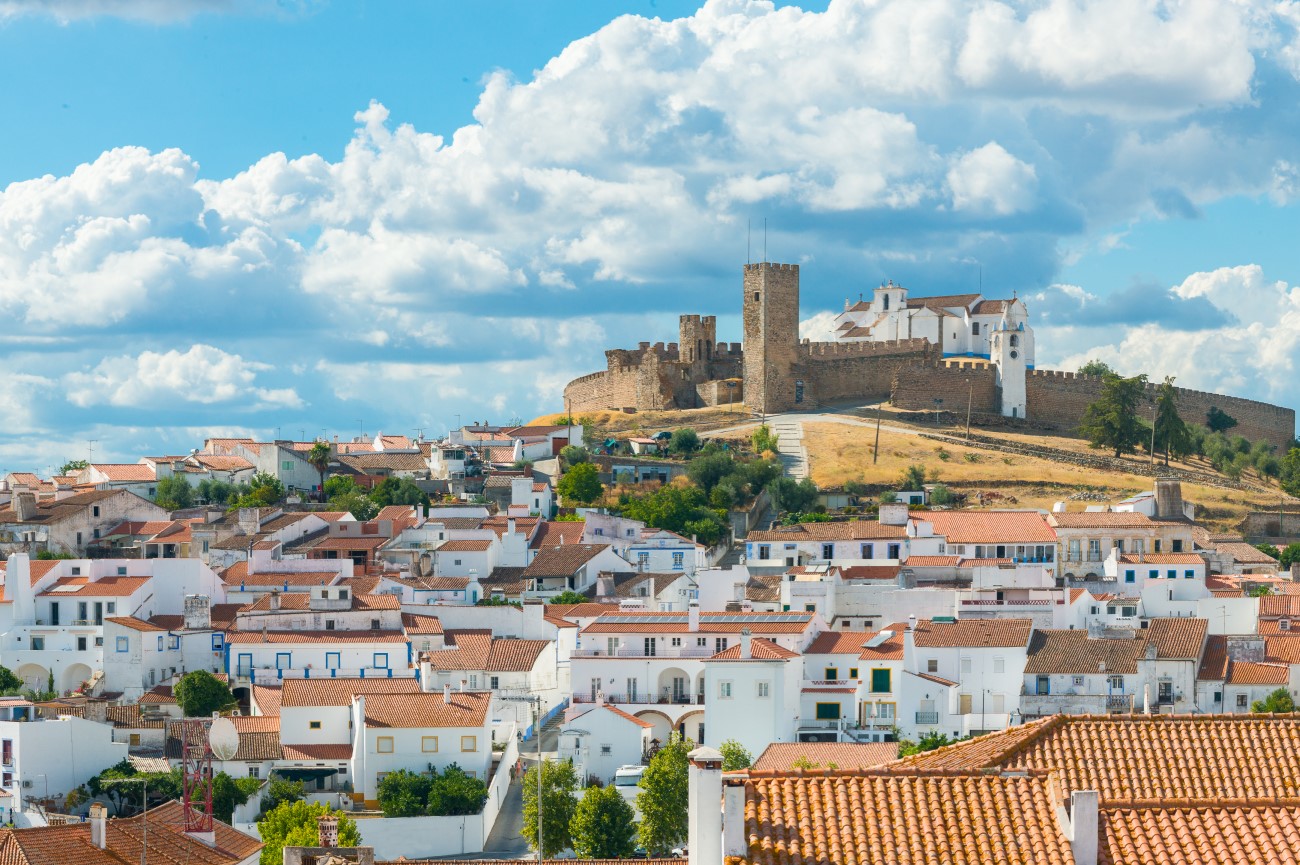
- Estremoz: For a scenic route to Estremoz, take the N-18. Also known as “Cidade Branca”, this town is famous for its marble, which is featured in many of the town’s monuments. Highlights include the Estremoz Castle and the Capela da Rainha Santa.
Things to do with kids in Évora
Évora is full of historic sites for the whole family. Kids can learn about ancient civilisations by touring the Neolithic monuments dotted around the countryside. Ebora Megalithica offers guided tours of the area along with workshops on pre-historic crafts like ceramics and stone carving. You'll also spot well-preserved Roman monuments in the city centre, including a Roman temple and the thermal baths hidden inside the city council.
You can spend a day walking along the city’s medieval walls or following the 8km path along the aqueduct. Alternatively, you can stick to the old town, exploring attractions like the eerie bone chapel in Igreja de São Francisco or climbing up to the cathedral’s tower to take in the views. There are also a handful of gardens where you can unwind, including the Jardim Público de Évora, which features a small playground and a set of fake medieval ruins. Occasionally, you can spot peacocks roaming around the park. Older kids may enjoy a visit to the go-kart track on the outskirts of Évora.
Best time to visit Évora
The best time to visit Évora is around spring or autumn. The weather tends to be mild around that time, allowing you to explore the city at ease. There are also fewer crowds during those seasons. Summer can be pretty hot, with temperatures reaching up to 30ºC, which can make it harder to walk around. That said, it is the busiest season, with plenty of events on offer, including the annual Feira de São João.
Évora festivals
- Feira de São João: Every year in late June, Évora celebrates the São João festival. The party takes place around the Rossio de São Brás and includes concerts, food stalls, craft markets and plenty of entertainment for kids.


